Everyone has a favorite song from their youth, but do you know what the most popular song on the Billboard Charts was the year you were born?
When I learned what topped the charts when I was born, I won’t say I was disappointed, but I wasn’t exactly thrilled either, but that’s what happens when you’re born in the age of Disco.
In my best Dick Clark voice, here are the 50 Number 1 Hits from 1945-1995 and the artists who recorded them.
1995: Gangsta’s Paradise (Coolio)
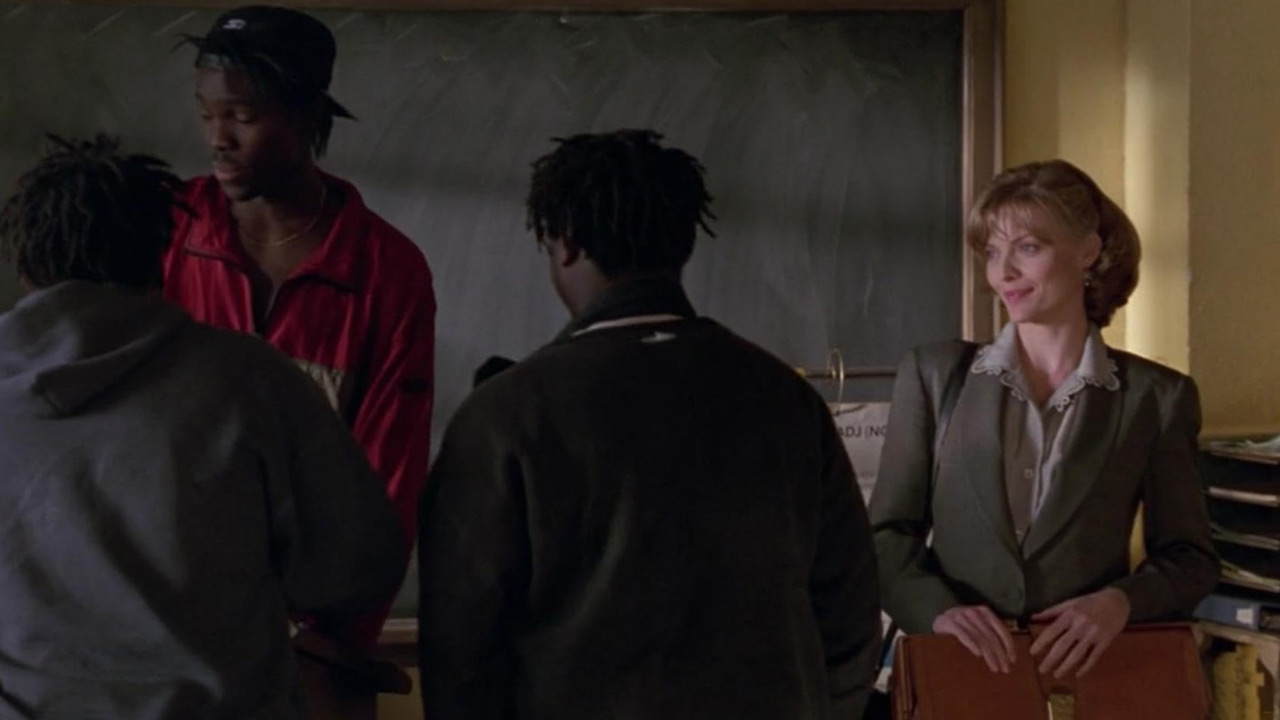
I was a sophomore in high school when this song came out. My friends and I all went to see Dangerous Minds in the theater solely to hear the theme song being played. I’m not even kidding a little bit–that’s how cool(io) the song was!
The song earned the Grammy for Best Solo Rap Performance, and the record was nominated for Best Record of the Year. In 1996, it won MTV’s Best Rap Video of the Year.
1994: The Sign (Ace of Base)
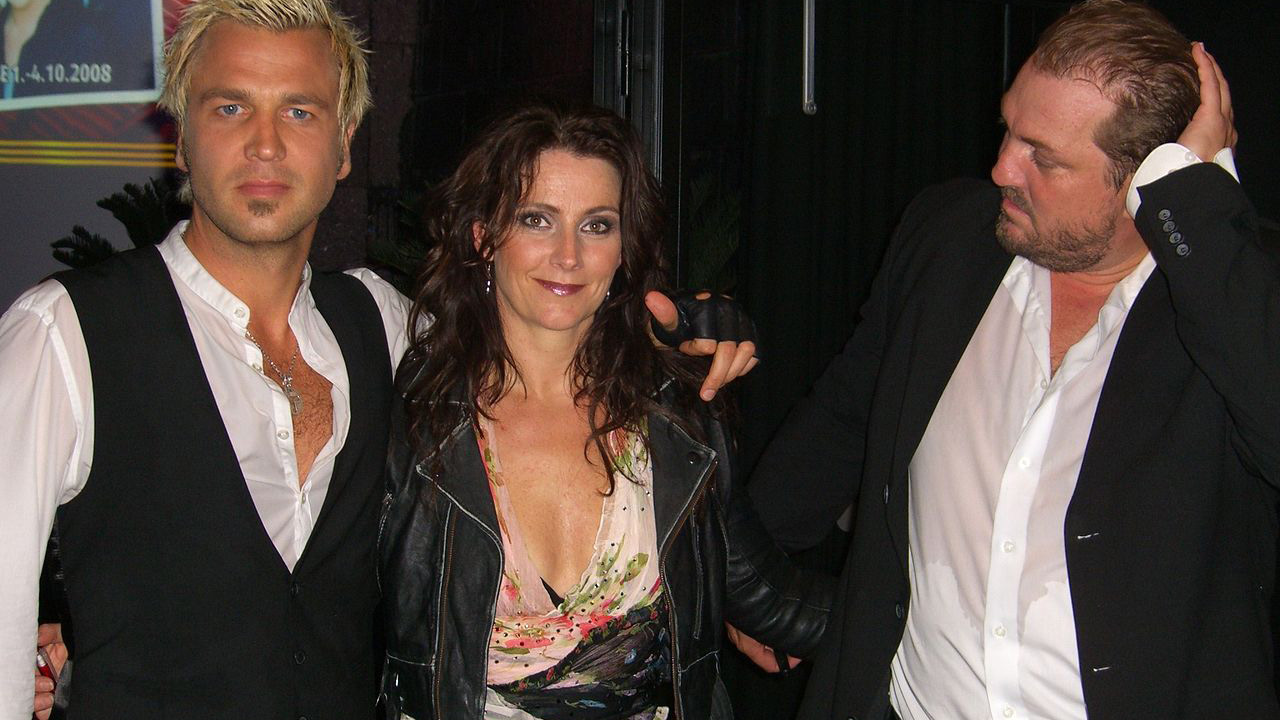
You know a song is a bop when you find yourself dancing to it while in line at the grocery store 20 years after its release. The Sign by the Swedish pop group Ace of Base was from their first North American studio album, The Sign, released in 1993. It hit Billboard’s Hot 100 No. 1 spot in 1994, lasting six consecutive weeks.
The popular hit was nominated for the Grammy Award for Best Pop Performance by a Duo or Group with Vocals at the 37th Annual Grammy Awards. Last year, Billboard magazine ranked it among the 500 best pop songs of all time.
1993: I Will Always Love You (Whitney Houston)
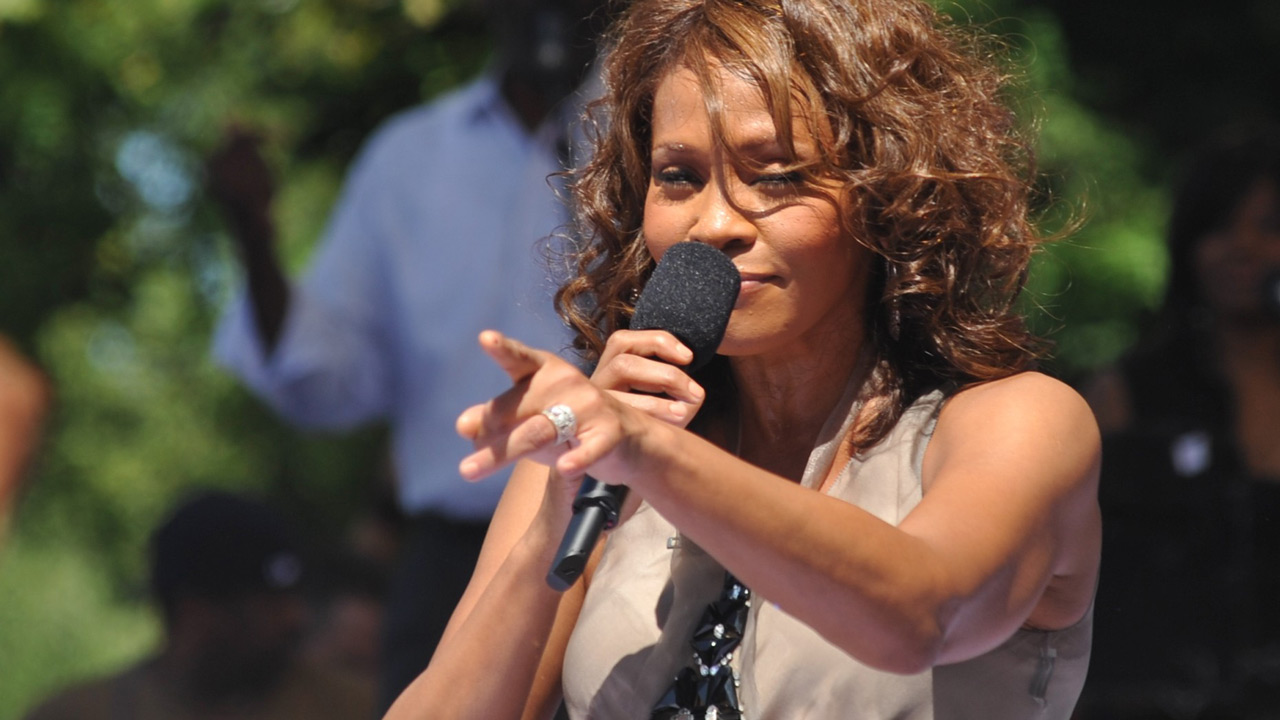
What started as a delicate, heartwrenching country song by Dolly Parton became one of the most iconic love ballads ever sung. In 1992, the Queen of Pop, Whitney Houston, recorded I Will Always Love You for her debut film, The Bodyguard. It stayed on the Top 100 Billboard Charts for 14 consecutive weeks and was the number-one hit of 1993.
Parton once told the Financial Times that she had to pull over immediately upon hearing Houston’s version for the first time because she almost wrecked her car while driving in Los Angeles. The record’s global sales exceeded 20 million.
1992: End Of The Road (Boyz II Men)
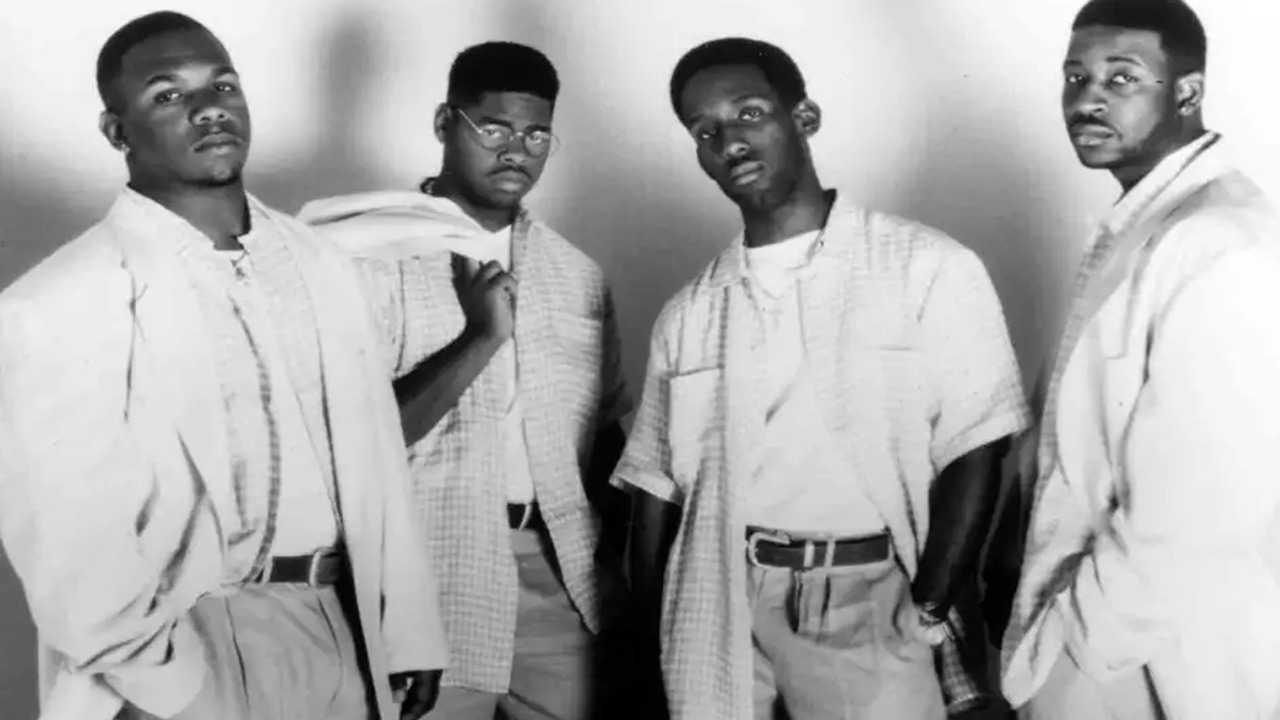
Was there a song written that was played at more school graduation ceremonies during the 1990s than Boyz II Men’s End Of The Road? I don’t think so. Although the lyrics have nothing to do with graduating, but everything to do with moving on from love.
This R&B hit spent a record-breaking 13 weeks on Billboard’s Hot 100 and was the number-one single of 1992. Internationally, it reached number one in Australia and the United Kingdom and was on the Hot 100 Eurochart. It also won Best R&B Performance by a Duo or Group with Vocals and Best R&B Song at the 1993 Grammy Awards.
1991: (Everything I Do) I Do It For You (Bryan Adams)

Every 13-18-year-old Gen-X girl swooned over the lyrics of the 1991 hit by Canadian rocker Bryan Adams. The power ballad, (Everything I Do) I Do It For You, was written for the soundtrack Robinhood: Prince of Thieves, starring Kevin Costner, and reached the number-one position on the music charts of at least nineteen countries, most notably in the United States spending seven weeks in the top spot.
The hit’s three co-writers won a Grammy Award for Best Song Written Specifically for a Motion Picture or Television, while the movie soundtrack was nominated for the Grammy Award for Record of the Year at the 1992 Grammy Awards.
1990: Hold On (Wilson Phillips)
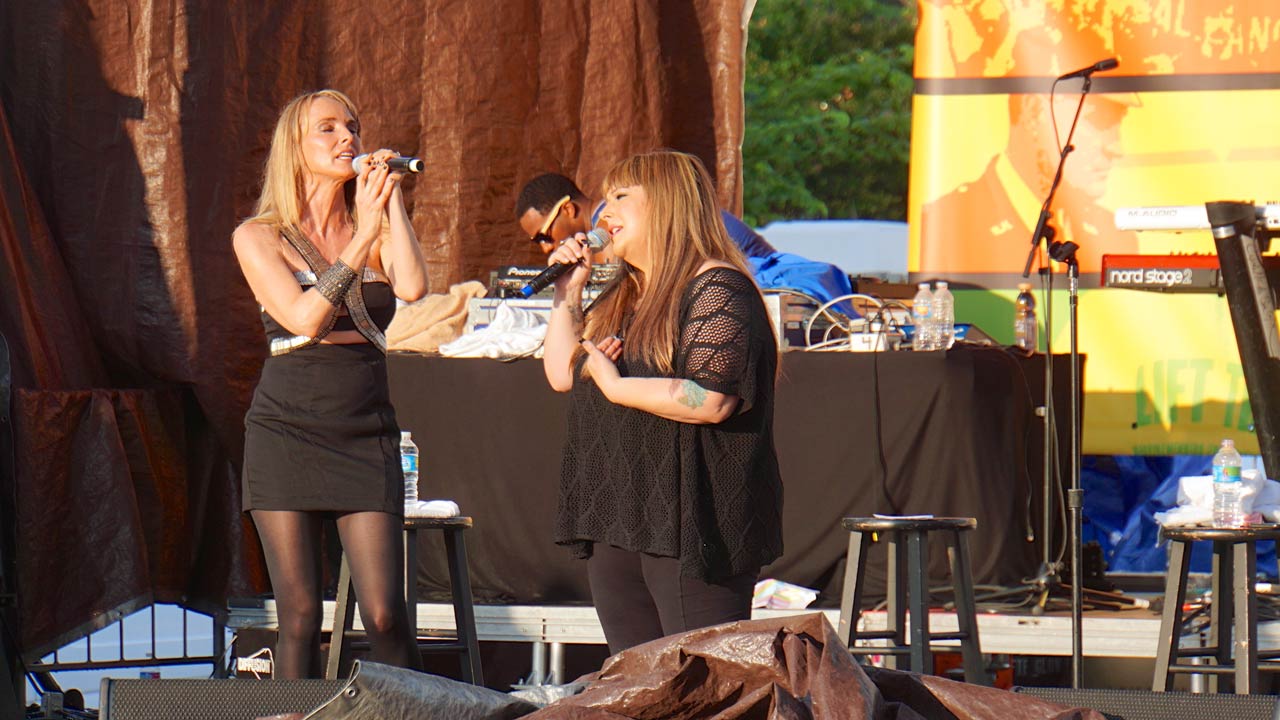
Wilson Phillips was among the most popular all-girl pop groups of the early 1990s. The daughters of Brian Wilson of The Beach Boys and John and Michelle Phillips of the Mamas and the Papas were music royalty, and their smash hit of 1990, Hold On, proved that they had the pipes to back up those titles.
The song topped the US Billboard Hot 100 for a week in June 1990 and was the most successful single of that year in the US. The track was nominated for Song of the Year and Best Pop Vocal Performance by a Duo or Group at the 33rd annual Grammy Awards but didn’t take home either award.
1989: Look Away (Chicago)
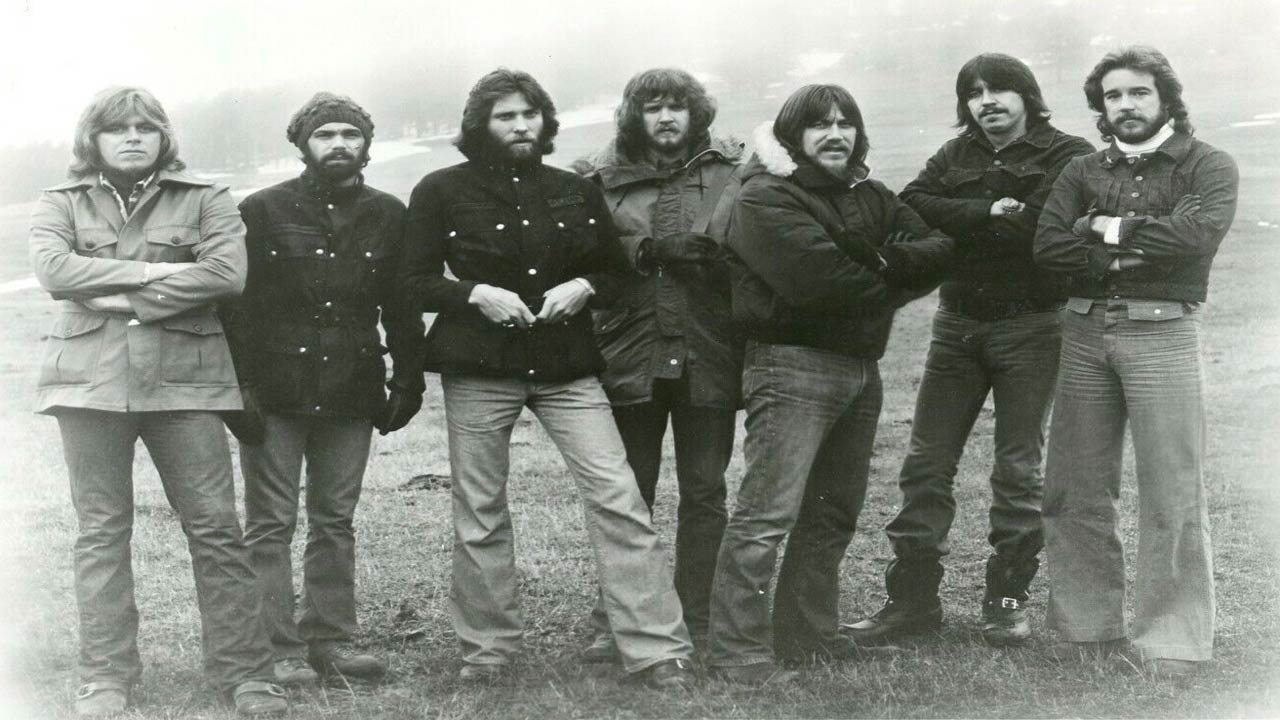
Have there been sadder lyrics to a song about heartbreak than Chicago’s 1988 hit Look Away?
Millions of fans worldwide must have cried their eyes out when it was played on the radio. Although the hit debuted in 1988, it topped the charts and was the number-one hit of 1989, marking the band’s first hit since Peter Cetera left the group four years prior.
1988: Faith (George Michael)
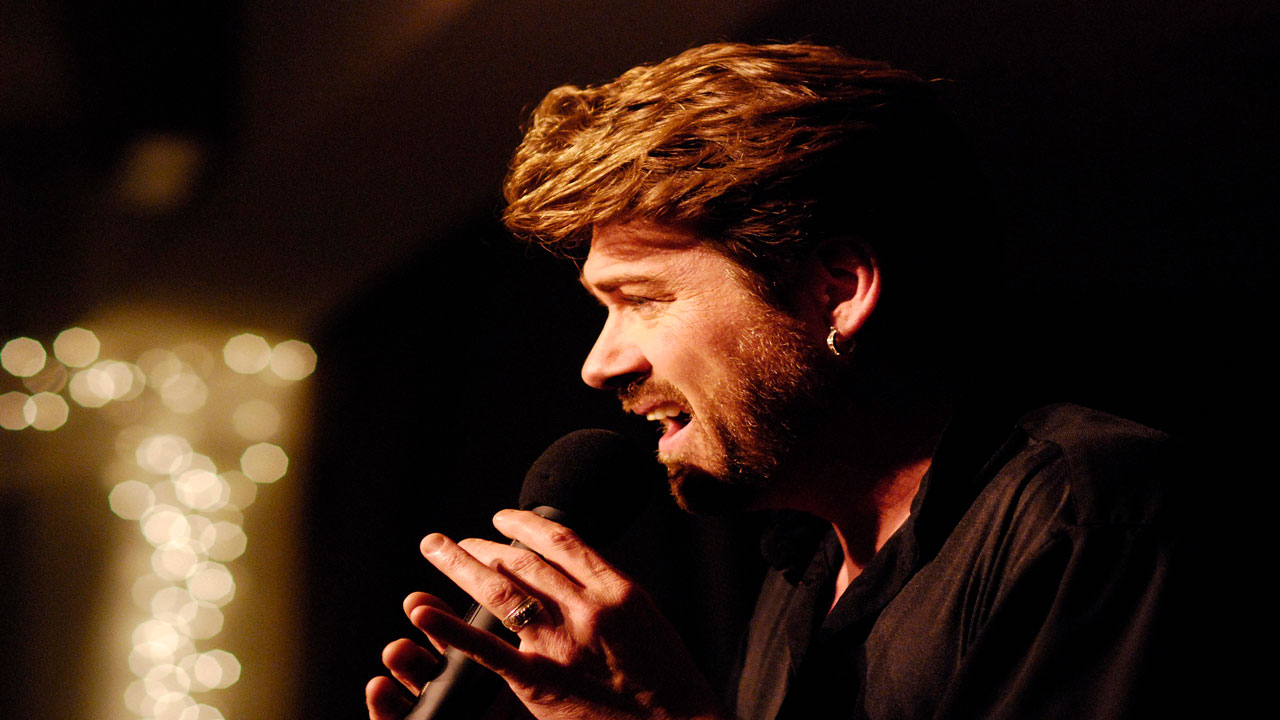
Two years after George Michael left the UK pop band Wham!, his first solo studio album, Faith, was released in October 1987. Faith spawned four number-one singles on the Billboard Hot 100: Faith, Father Figure, One More Try, and Monkey, making Michael the only British male solo artist to have four number-one hits from one album on the Billboard Hot 100.
The song, Faith, held the number-one spot for four weeks in the United States in 1988. It also hit the Australian and Canadian charts number-one spot and landed at number two on the UK singles chart.
1987: Walk Like An Egyptian (The Bangles)
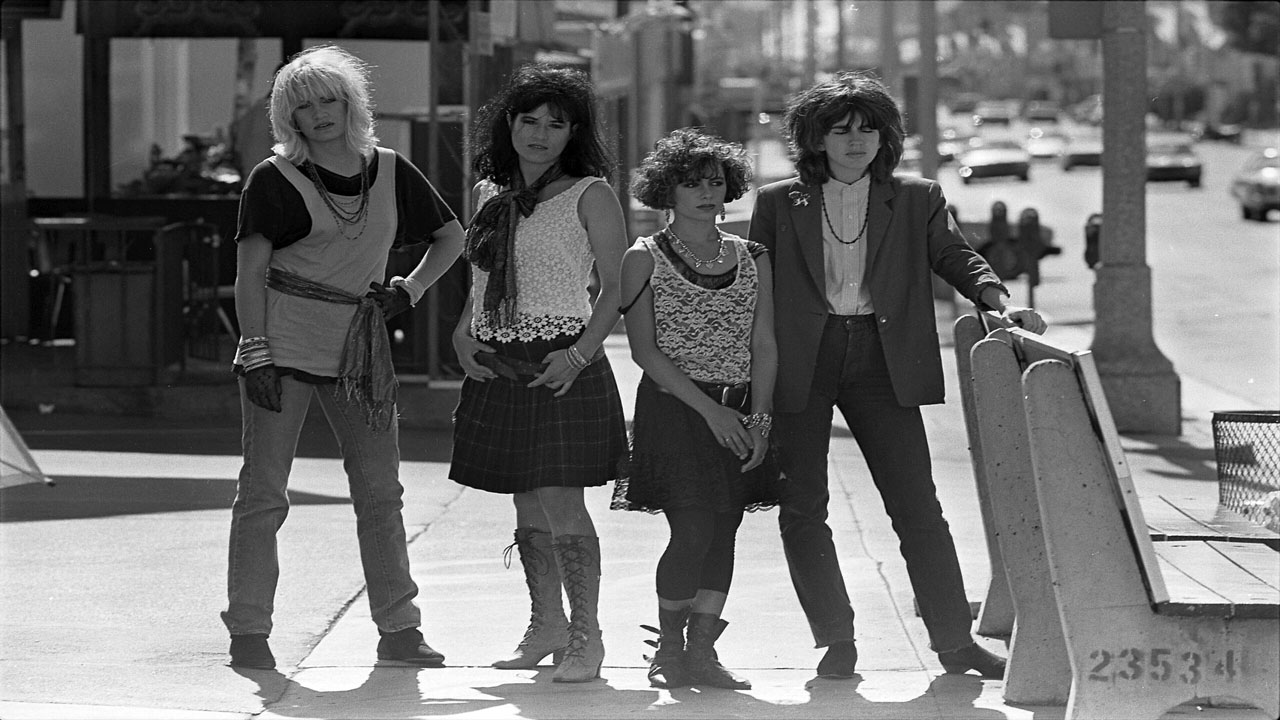
Everyone was walking like an Egyptian in 1987, thanks to the Bangles’ third single from their sophomore studio album, which hit the radio waves in September 1986. Walk Like An Egyptian landed on the Billboard Hot 100 hits late that year and wound up in the No. 1 spot for four weeks in January 1987.
In addition to that bop, the all-girl group’s Manic Monday propelled the album Different Light to number 2 on the Billboard 200 chart, making it the band’s most successful album. The music video (which I adored as a kid) was nominated for Best Group Video at the 1987 MTV Music Video Awards.
1986: That’s What Friends Are For (Dionne Warwick)
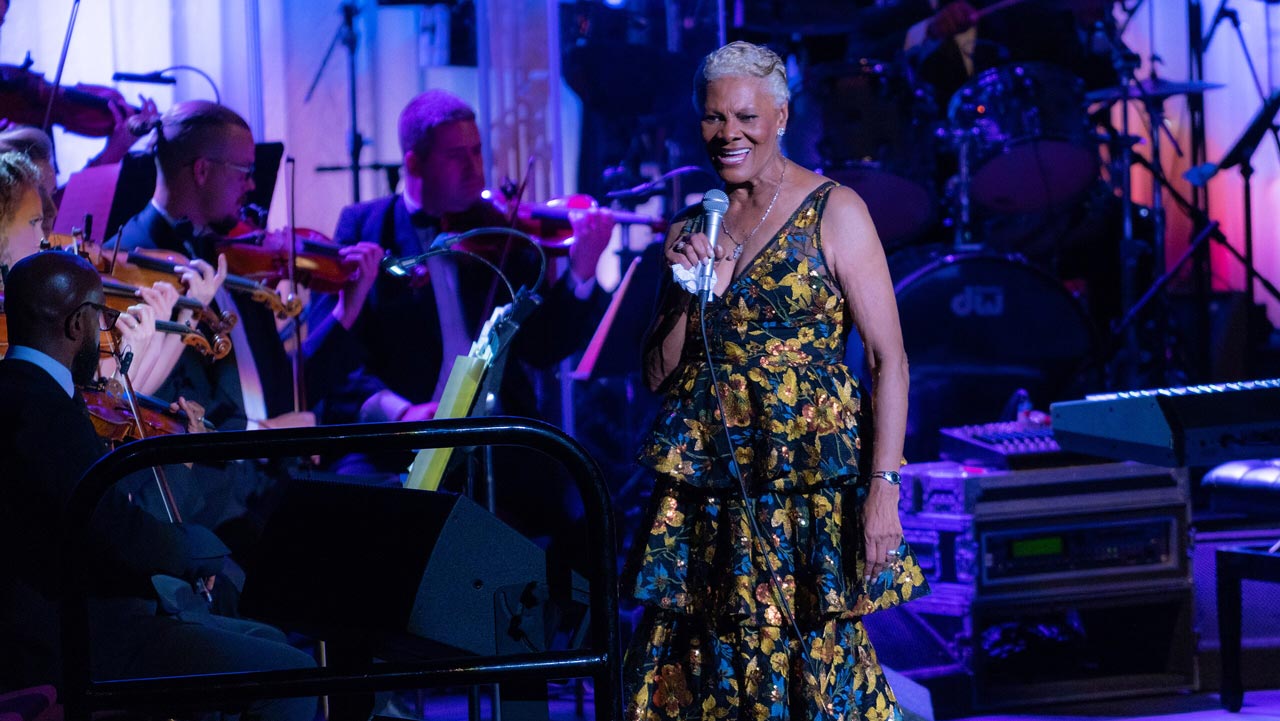
A little fun fact about the most popular song of 1986: That’s What Friends Are For was initially recorded by Scottish rocker Rod Stewart. However, the iconic vocalist Dionne Warwick, along with several other famous friends, covered it and released it as a charity single for AIDS research and prevention in 1985.
It became a massive hit and was the No. 1 song of 1986. It won the Grammy for Best Pop Performance by a Duo or Group with Vocals and Song of the Year. It raised more than $3 million for its cause.
1985: Careless Whisper (Wham!)
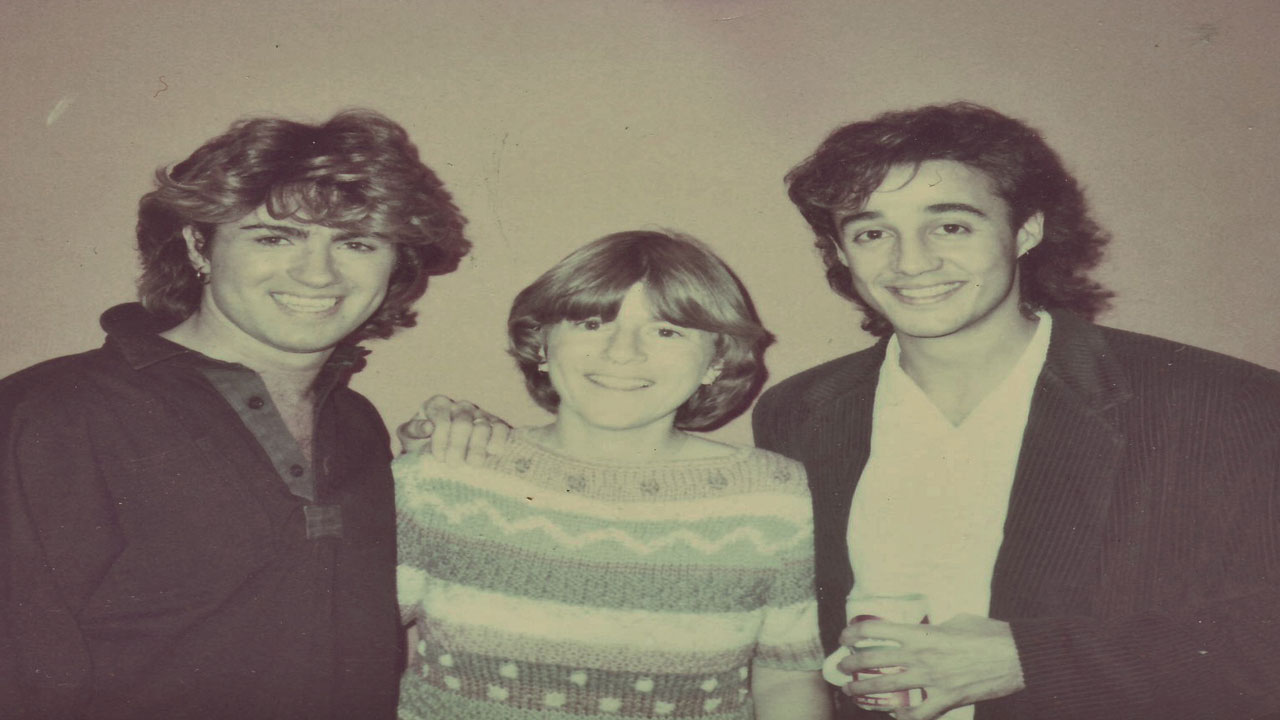
Pop icon George Michael enjoyed a lot of success in the 1980s. First with his duo act, Wham!, with Andrew Ridgeley, and later as a solo artist. In addition to his singing capabilities and charming personality, Michael was an accomplished musician and producer.
The duo wrote the smash hit Careless Whisper and recorded it in 1984 for their album Make it Big. It became a commercial success in the UK and the United States, selling six million copies worldwide and two million in the States. It was Billboard’s Hot 100 top spot in 1985.
1984: When Doves Cry (Prince)
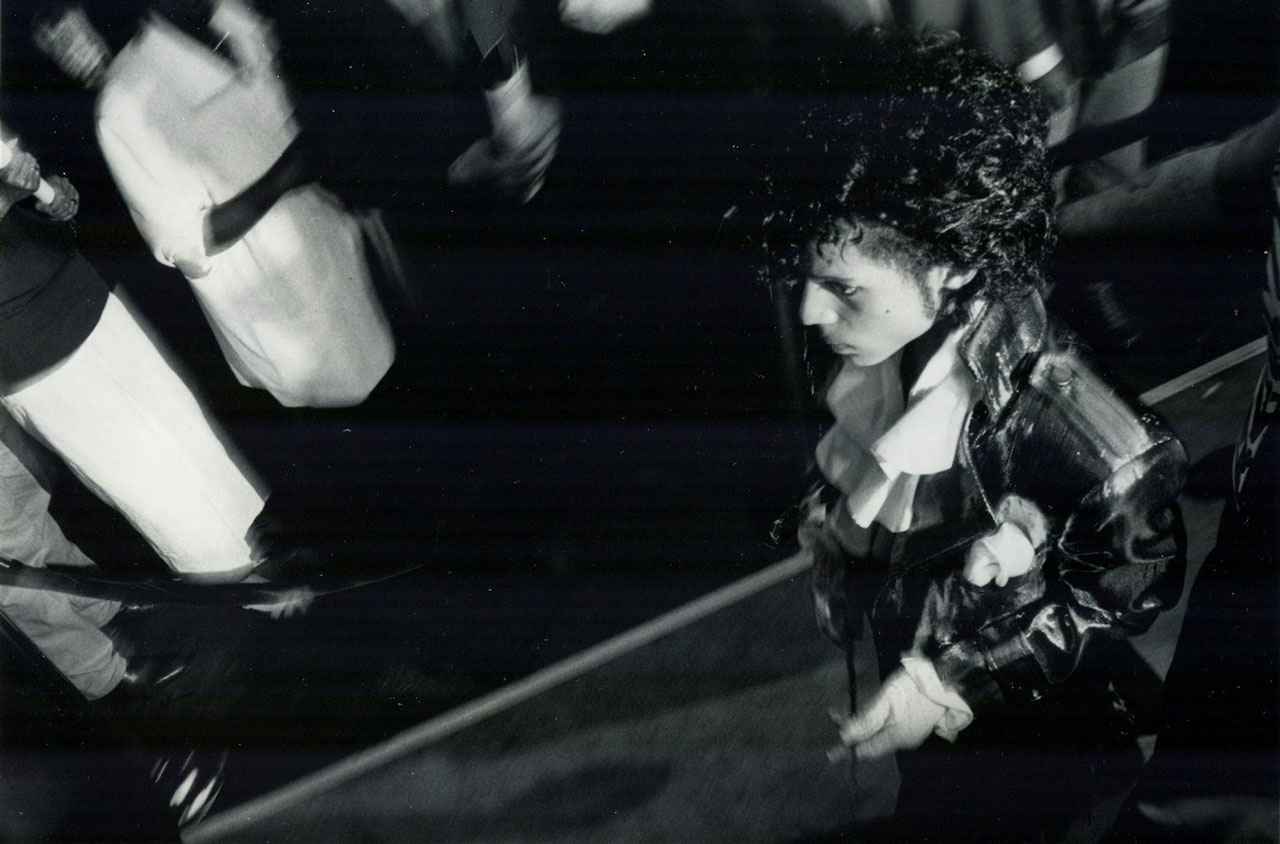
When Dove’s Cry was the legendary artist, Prince’s first Billboard Hot 100 No. 1 hit. The song featured on the album Purple Rain stayed in the top spot for five weeks and was a hit worldwide.
Upon the icon’s tragic and sudden death in 2016, the hit made the Billboard chart again, landing at number eight, making its first appearance back on the charts since September 1984.
1983: Every Breath You Take (Police)
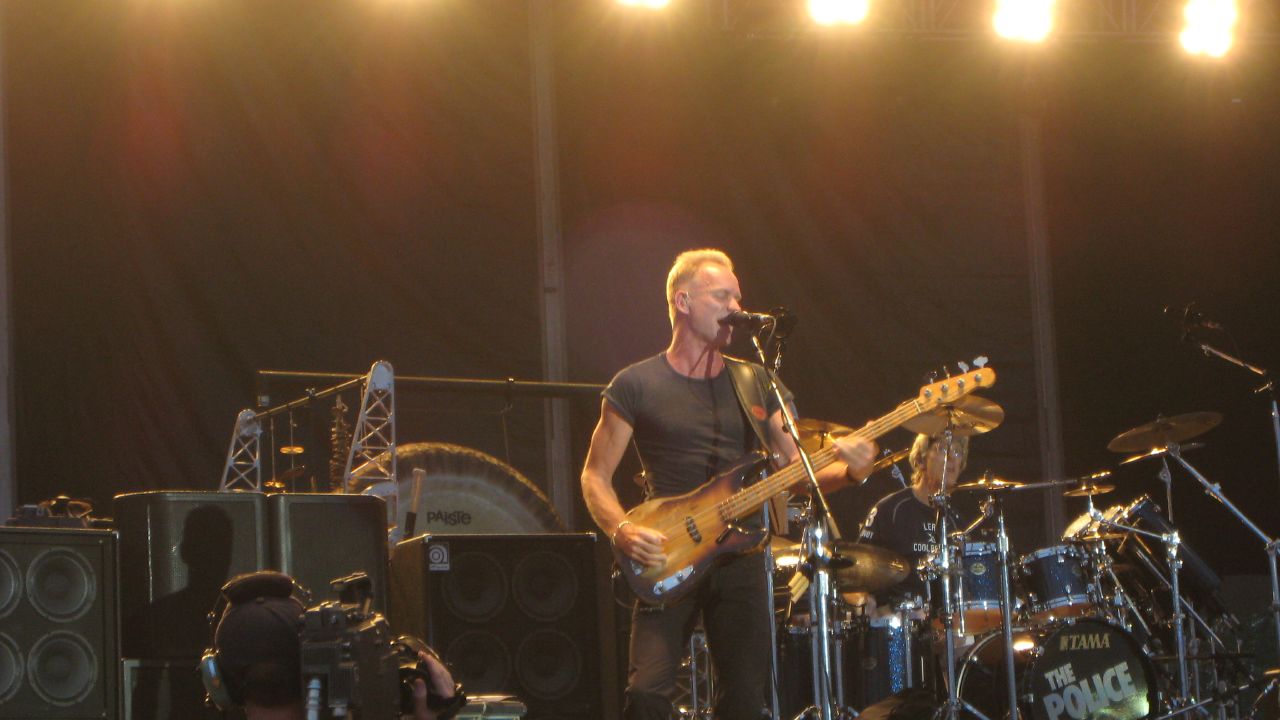
In 1983, the British rock band The Police released their album Synchronicity, which included the smash hit, Every Breath You Take. According to Music Legacy, the band’s only No. 1 hit ever to make the Billboard chart, topped the Billboard Hot 100 singles chart for eight weeks. The single won Best Song of the Year and Best Pop Performance by Duo or Group with Vocals at the 26th Grammy Awards.
Written by frontman Sting, Every Breath You Take is the group’s signature song. In 2010, it was estimated to have generated between a quarter and a third of Sting’s music publishing income.
1982: Physical (Olivia Newton-John)
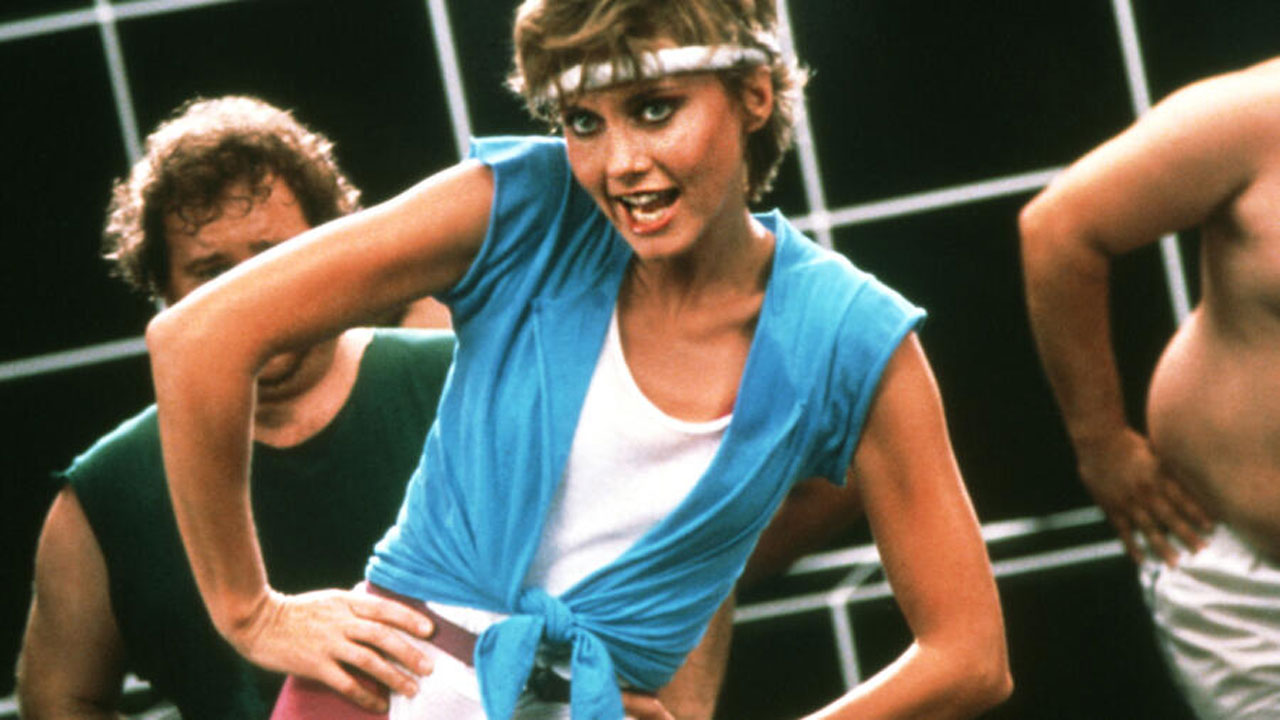
If you were born in 1982, you are blessed because that was the year the delightful British-Australian Olivia Newton-John released the biggest hit of her lifetime that year. Newton-John took the bad girl image she transformed into at the end of Grease and applied it to her 11th studio album with the provocative song, Physical, released as a single.
The hit spent ten consecutive weeks at the top of the Billboards Hot 100 chart and became the star’s biggest hit of all time, cementing her legacy as a mega-pop superstar.
1981: Bette Davis Eyes (Kim Carnes)
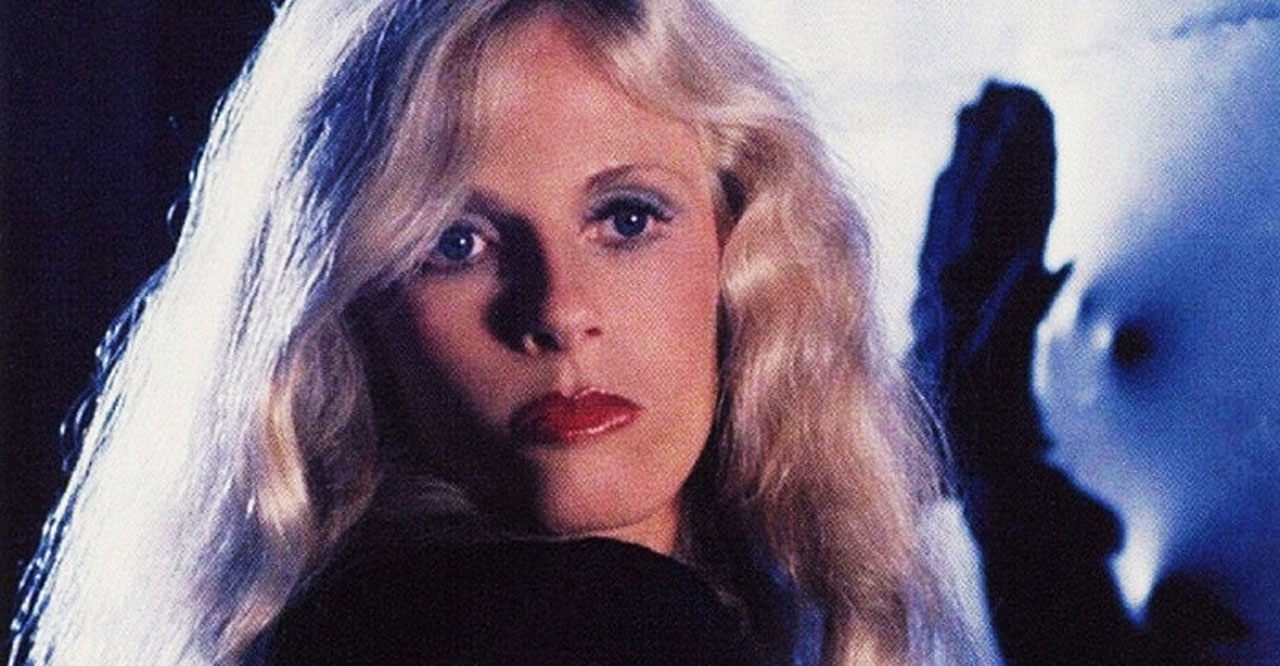
1981 saw the release of a fair portion of excellent songs, but Bette Davis Eyes, written and composed by Donna Weiss and Jackie DeShannon in 1974 and recorded by Kim Carnes in 1981, was that year’s biggest hit. The powerful story of a woman who will knock you dead with one look must have resonated with music lovers everywhere because it spent nine weeks in the No. 1 spot on Billboard’s Hot 100.
When the song became a hit, the 73-year-old actress it pays homage to wrote to Carnes, Weiss, and DeShannon, thanking them for making her a “part of modern times again.”
1980: Call Me (Blondie)
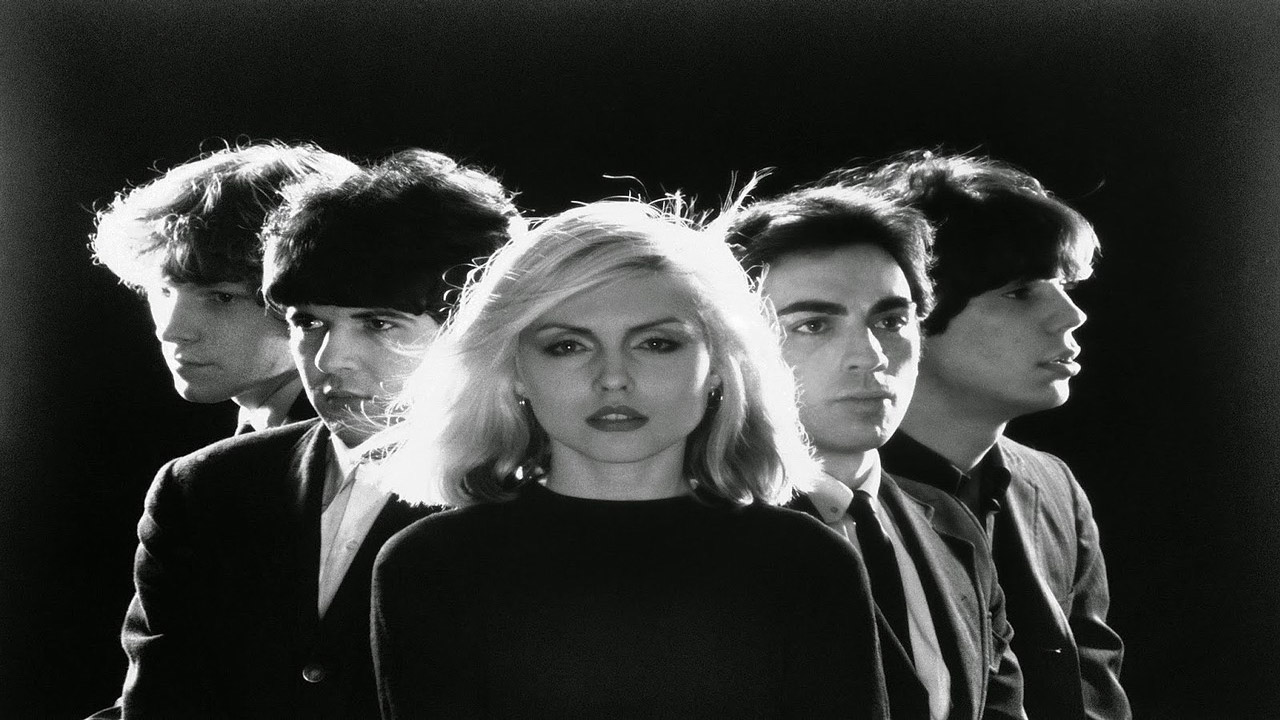
Truth be told, I am so jealous this was the most popular song of 1980 and not my birth year! Call Me by Blondie, or really any song by the new wave band, is my favorite. So, to all you 1980 babies out there—you’re so lucky!
Call Me was written as the theme song for the film American Gigolo, starring Richard Gere, by the glorious lead singer, Debbie Harry. It stayed on the Billboard’s Hot 100 in the number one spot for six consecutive weeks. It became the group’s biggest hit of all time and their second No. 1 smash.
1979: My Sharona (Knack)
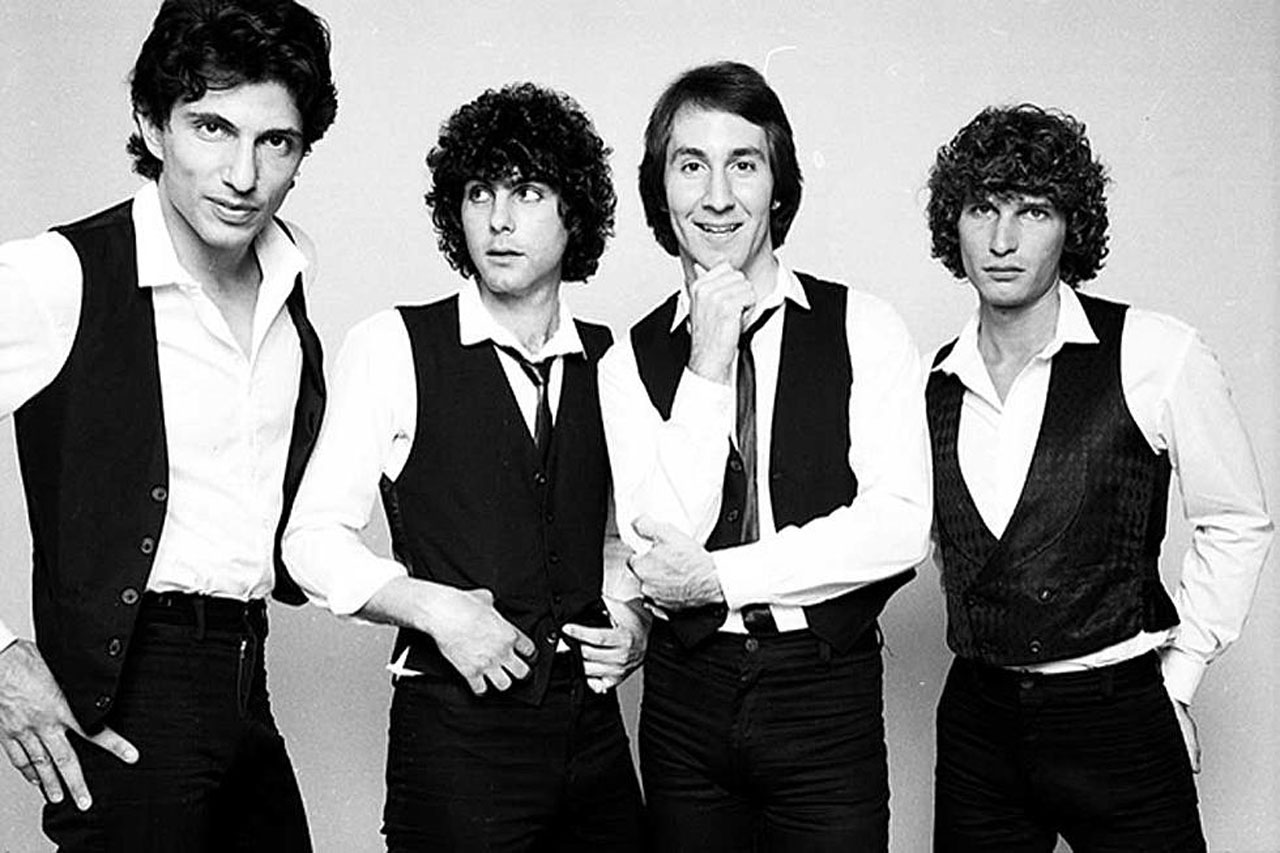
Many Gen Xers learned all about My Sharona by the Knack from the 1994 indie film Reality Bites, which resulted in the 1979 No. 1 hit re-entering the charts. Written by Berton Averre and Doug Fieger and released in 1979 from their debut album, Get the Knack, My Sharona reached number one on Billboard’s Hot 100, where it stayed for six weeks.
The single was Capitol Records’ fastest gold-status debut single since the Beatles released I Want To Hold Your Hand in 1964.
1978: Shadow Dancing (Andy Gibb)
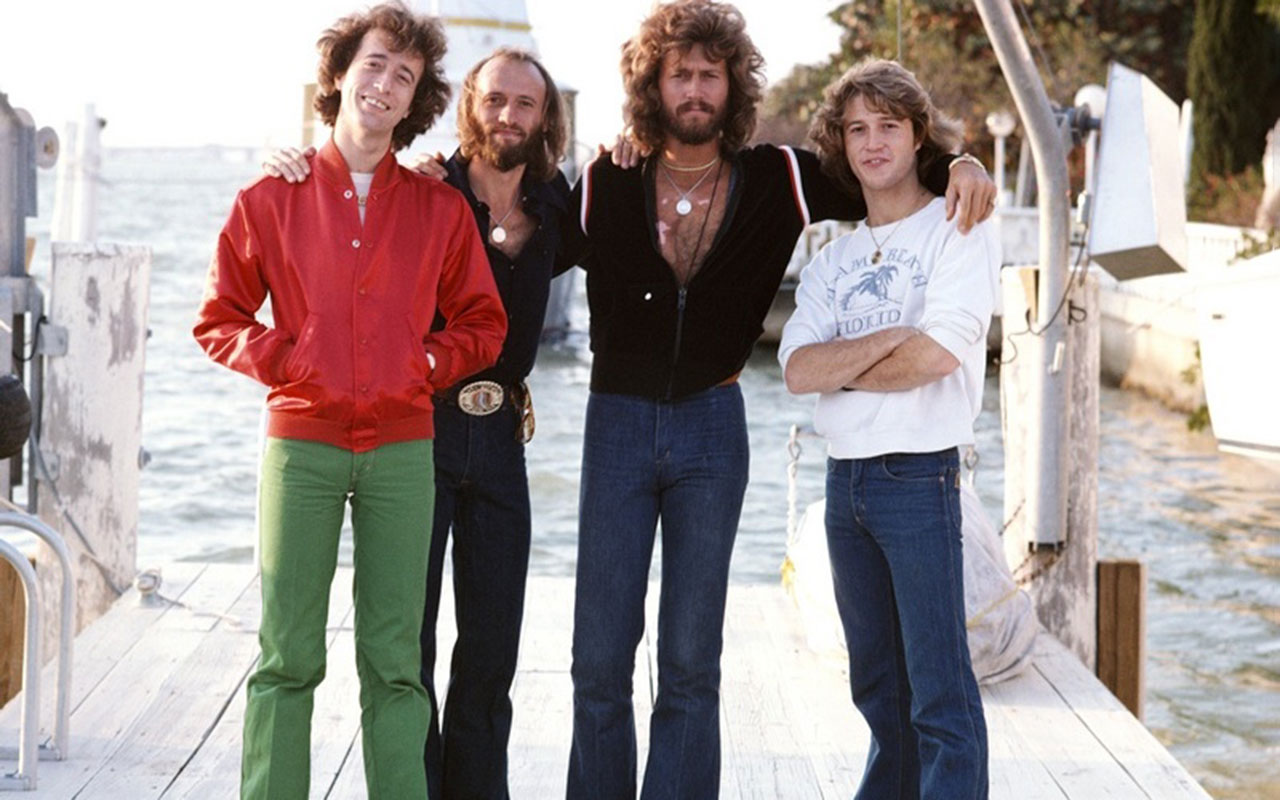
Sigh! Why did I have to be born at the end of the Disco era? For everyone who was born in 1978, we got robbed! It should’ve been Chic’s Le Freak, but I digress. Shadow Dancing by Andy Gibb, the younger brother to all of those polyester-clad Bee Gees, hit the number one spot on Billboard’s Hot 100 for seven weeks.
Gibbs tells how he and his older brothers were working on the film Sgt. Pepper’s Lonely Hearts Club Band sat down and, within ten minutes, had the chorus to Shadow Dancing down. All four men are credited as writers on the album.
1977: Tonight’s The Night (Gonna Be Alright) (Rod Stewart)
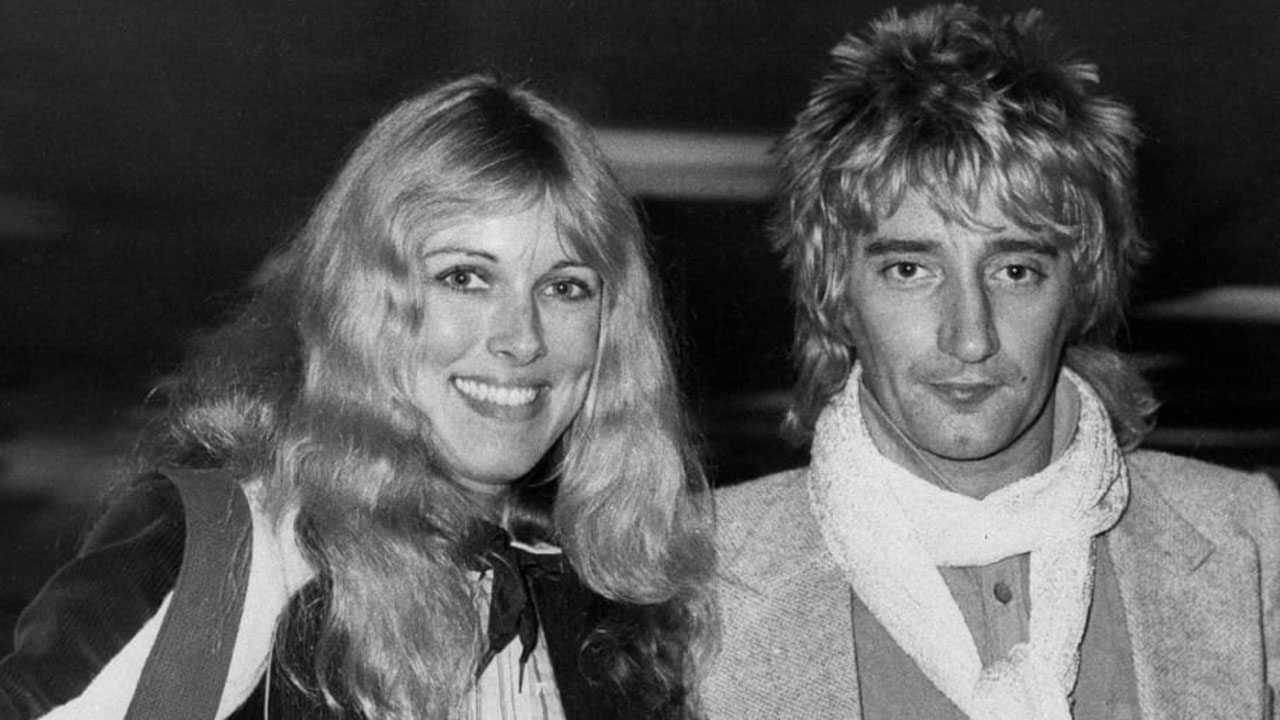
How many young men thought they were so cool when they brought a young woman home and had Rod Stewart crooning Tonight’s The Night in the background? My guess is a lot. The hit was, however, considered controversial at the time of its release in 1976, but it still became a huge commercial success.
Although it debuted at number 81 on the Billboard Hot 100 chart, it quickly rose through the ranks and landed at the No. 1 spot, where it stayed for eight weeks. It was Stewart’s longest-running number-one song throughout his decades-long career.
1976: Silly Love Songs (Wings)
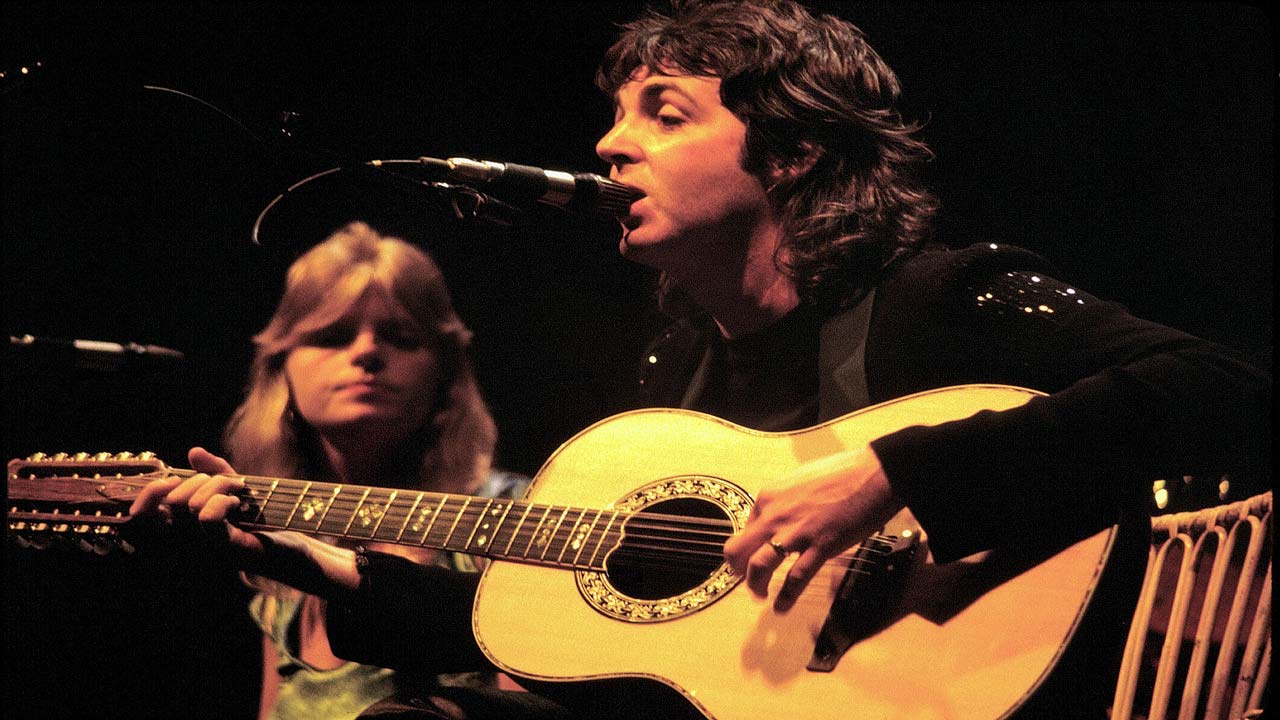
Paul McCartney and his wife Linda formed the band Wings in 1971 after Paul left the Beatles. Their 1976 hit Silly Love Songs from the album Wings at the Speed of Sound was Billboard’s Hot 100 topper that year.
Rumor has it that Paul directed the song toward his former bandmate, John Lennon, regarding his accusation that McCartney only ever wrote “silly love songs.” In addition to this song and two others from his Beatles days, the musician has had three top Billboard songs during his career.
1975: Love Will Keep Us Together (Captain and Tennille)
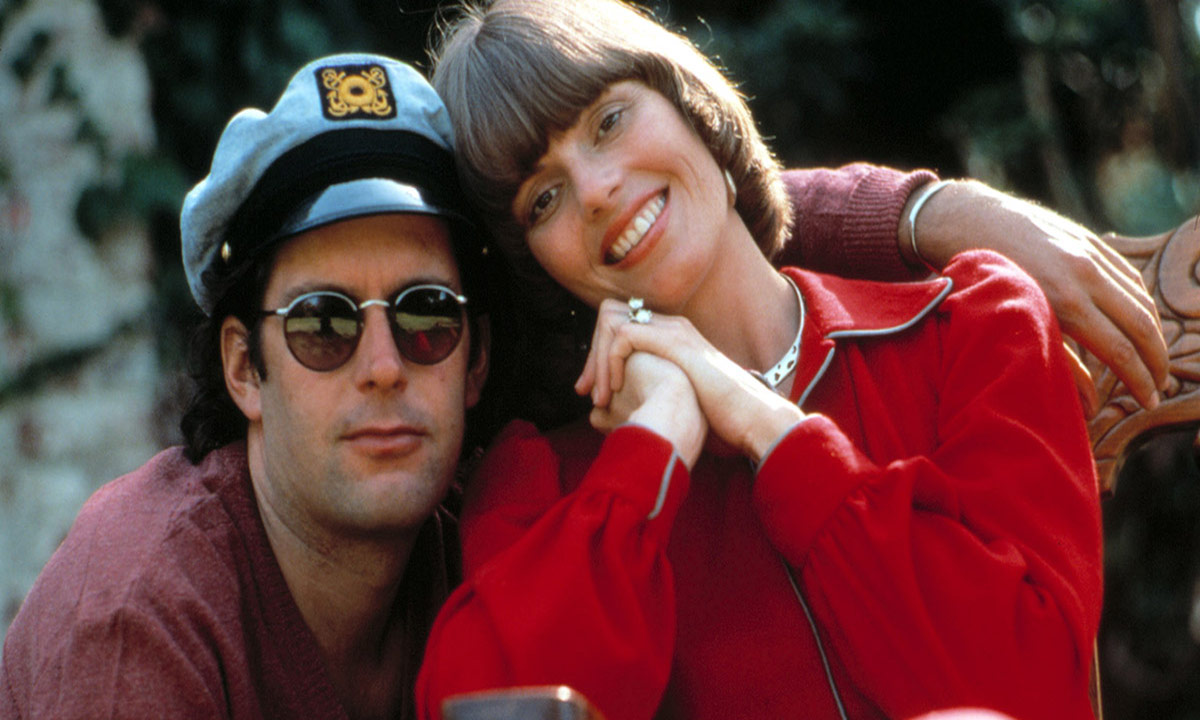
In late June of 1975, Captain and Tenille’s hit Love Will Keep Us Together landed on Billboard’s Hot 100 for four weeks that summer, making it the biggest hit of that birth year. Soft rock topped the charts in the early-mid 70s, and this song was the cherry on top of that genre.
Written by the powerhouse writing duo Neil Sedaka and Howard Greenfield, who eventually parted ways, Love Will Keep Us Together was initially recorded by the brother-sister duo Mac and Katie Kissoon in 1973.
1974: The Way We Were (Barbra Streisand)
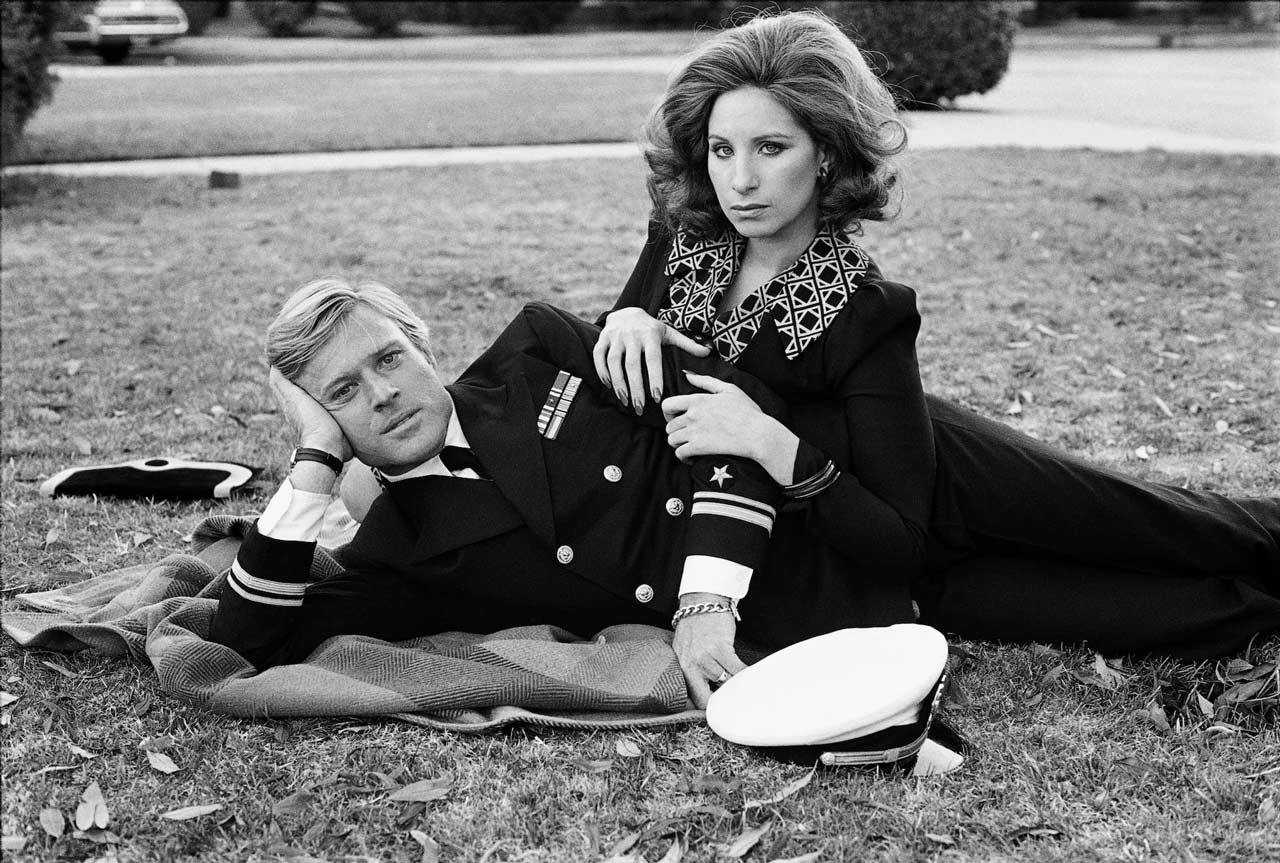
The Way We Were, released as the lead single from Streisand’s 15th studio album of the same name, was the biggest hit of 1974. Some critics claim that this song helped revive Streisand’s music career, which had been in a slump for the last few years.
It was featured in the 1973 film of the same name and won two Academy Awards, which were credited to the track’s writers. The iconic singer and actress has also featured it on several compilation albums, with its most recent appearance on her 2010 album Barbra: The Ultimate Collection.
1973: Tie a Yellow Ribbon Round the Ole Oak Tree (Tony Orlando and Dawn)
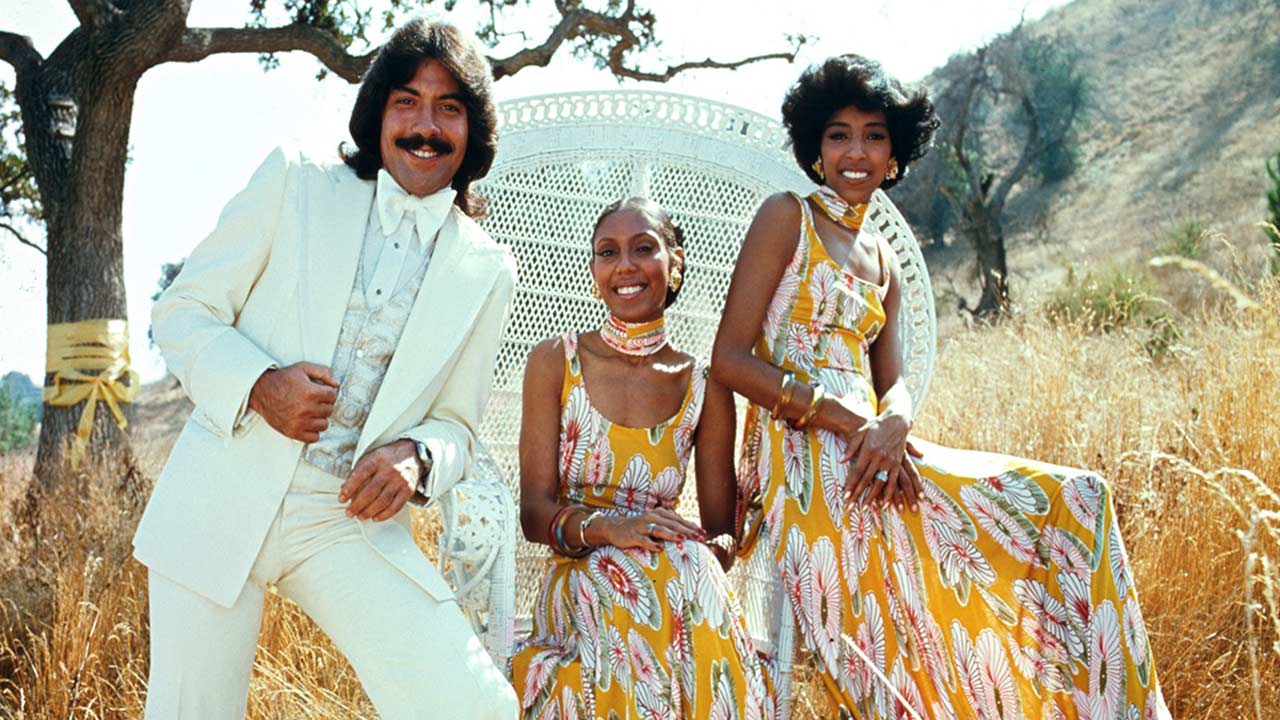
The biggest hit of 1973 was Tony Orlando and Dawn’s Tie A Yellow Ribbon Round the Ole Oak Tree. It saw massive commercial success not only in the United States but elsewhere across the globe, reaching the top in ten different countries. In April of that year, Billboard’s Hot 100 was in the US and UK for four weeks.
The group won the very first American Music Award (AMA) for Favorite Song- Pop/Rock in 1974. This category was retired in 1995 but returned in 2016.
1972: The First Time Ever I Saw Your Face (Roberta Flack)
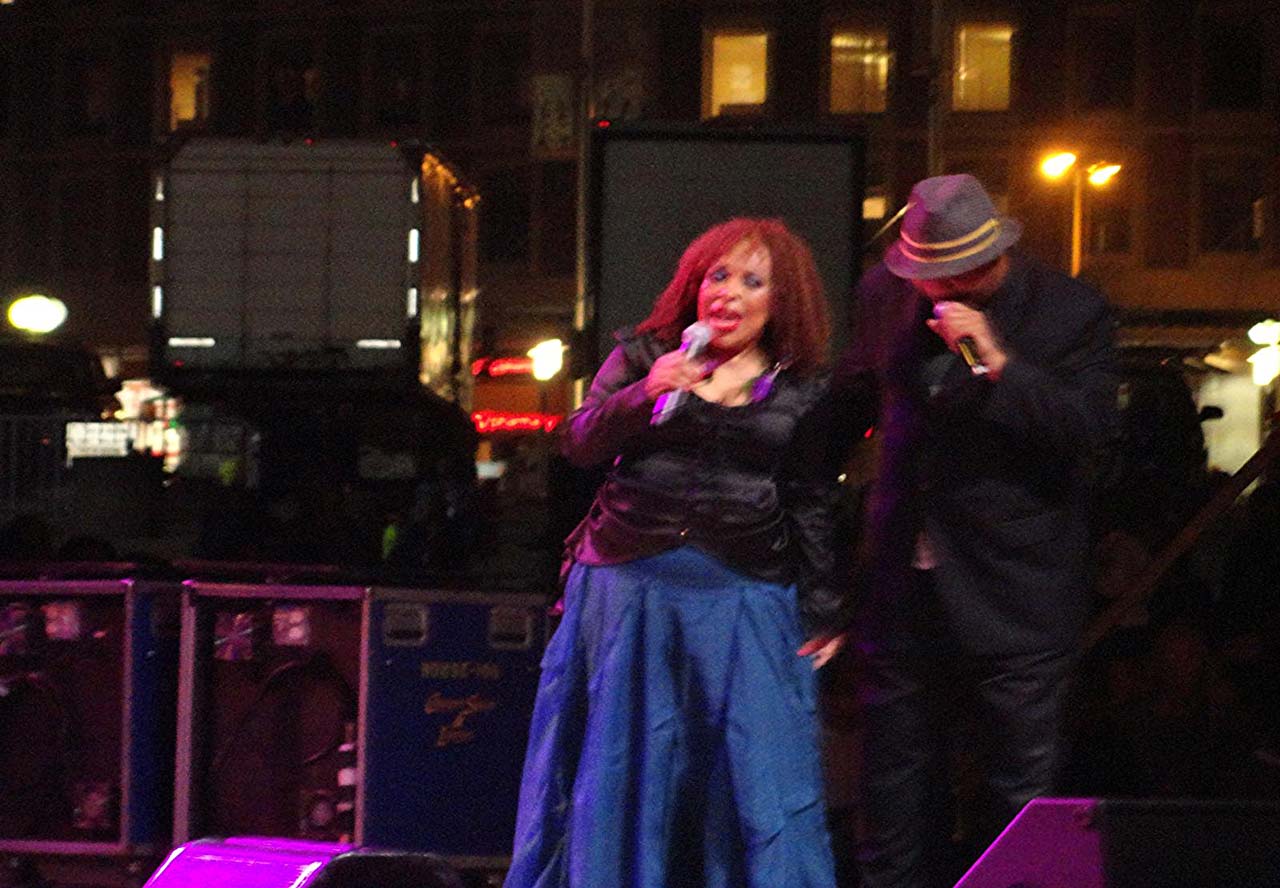
Although The First Time Ever I Saw Your Face was initially written and recorded in 1957 and recorded many times after that, it didn’t become a hit until the legendary singer Roberta Flack released it in 1972, winning Grammy’s for Record of the Year and Song of the Year. It was ranked on Billboard’s Hot 100 single for that year.
The song was initially a sleeper, but after being included in Clint Eastwood’s film Play Misty for Me, it slowly took off and eventually became the smash that we all know and love today.
1971: Joy To The World (Three Dog Night)
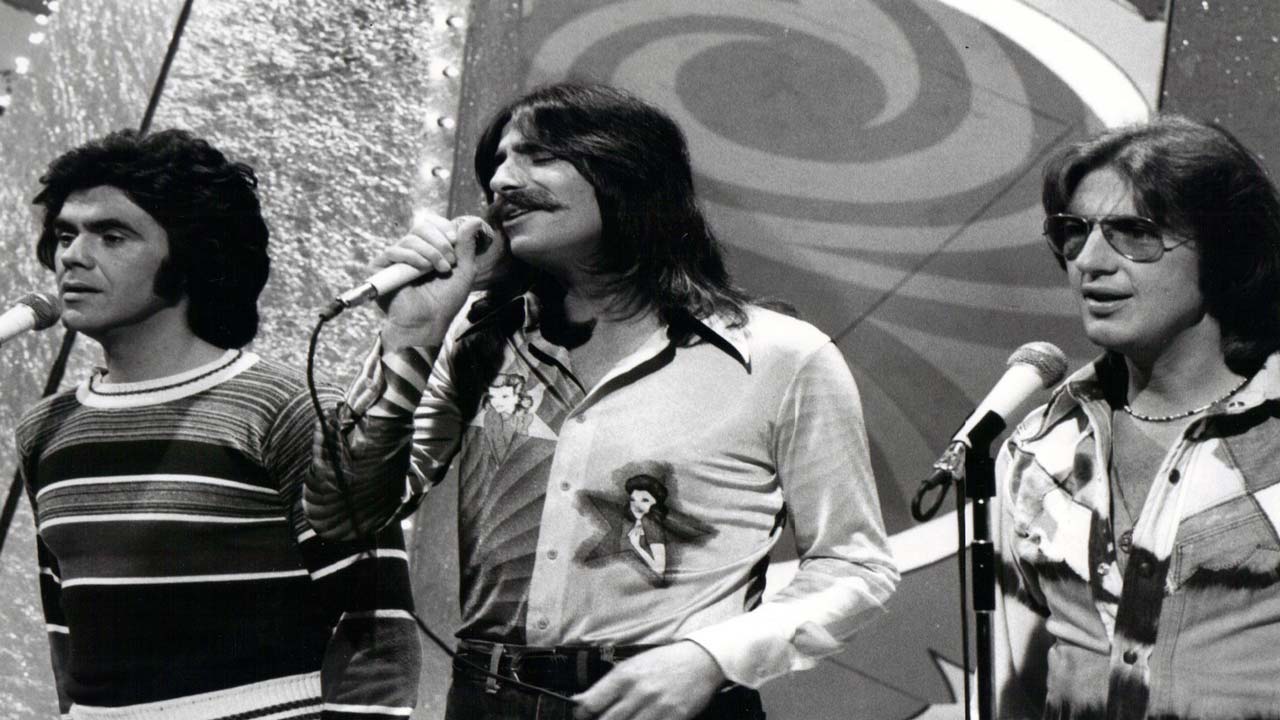
Is there a more famous song opening line than ”Jeremiah was a bullfrog?” Perhaps, but people loved it when Joy To The World by Three Dog Night was released. Although the band has called it a “kid’s song” or a “very silly song,” the hit landed on Billboard’s Hot 100 No. 1 spot for six consecutive weeks.
The RIAA (Recording Industry Association of America) certified the single gold. It was also nominated for a Grammy Award for Best Pop Vocal Performance by a Duo Or Group during the 14th Grammy Awards. The single has sold over 5 million copies worldwide.
1970: Bridge Over Troubled Water (Simon and Garfunkel)
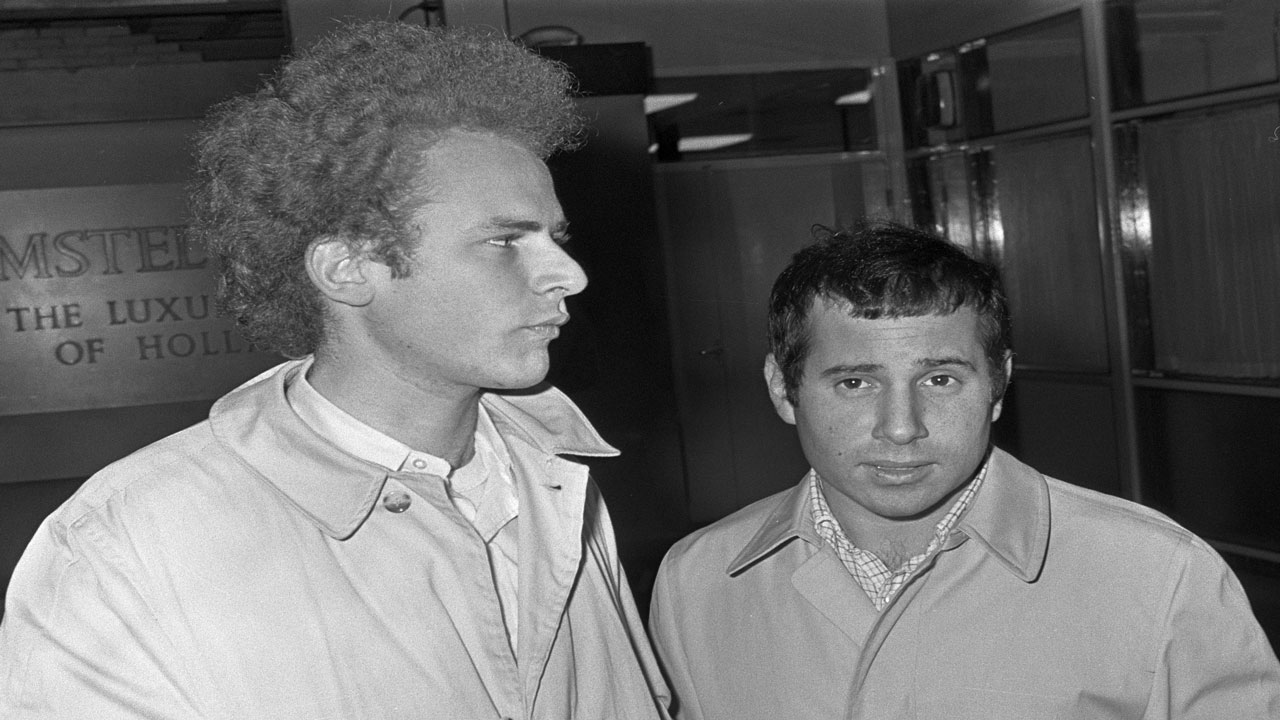
Bridge Over Troubled Water might be the most iconic folk song ever recorded. In 1970, it became Simon and Garfunkel’s signature song when it stayed at the top of Billboard’s Hot 100 for six consecutive weeks and sold over 6 million copies worldwide.
Although Paul Simon wrote the melodic earworm, Art Garfunkel is solely responsible for leading the vocals, even though he was initially reluctant to do so. Simon provided backup vocals.
At the 13th Grammy Awards in 1971, the duo took home the gold five times, most notably for Record of the Year and Song of the Year.
1969: Sugar, Sugar (The Archies)
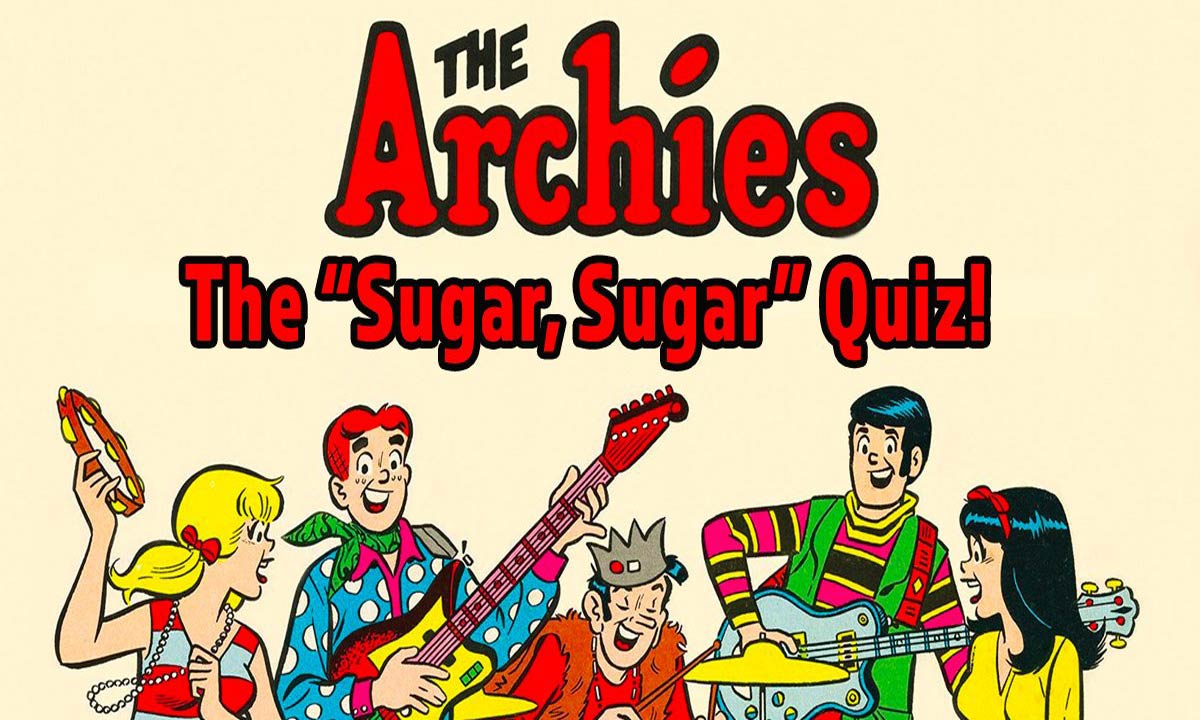
The first fictional band of studio musicians had the biggest hit of 1969. The Archies, the band for the Saturday morning cartoon The Archie Show, recorded the single Sugar, Sugar. It hit the airwaves and soon topped not only the US charts but the UK ones as well.
It was No. 1 on Billboard’s Hot 100 for four weeks and the UK Singles Chart for eight weeks– a big win for the bubblegum pop genre.
1968: Hey, Jude (Beatles)
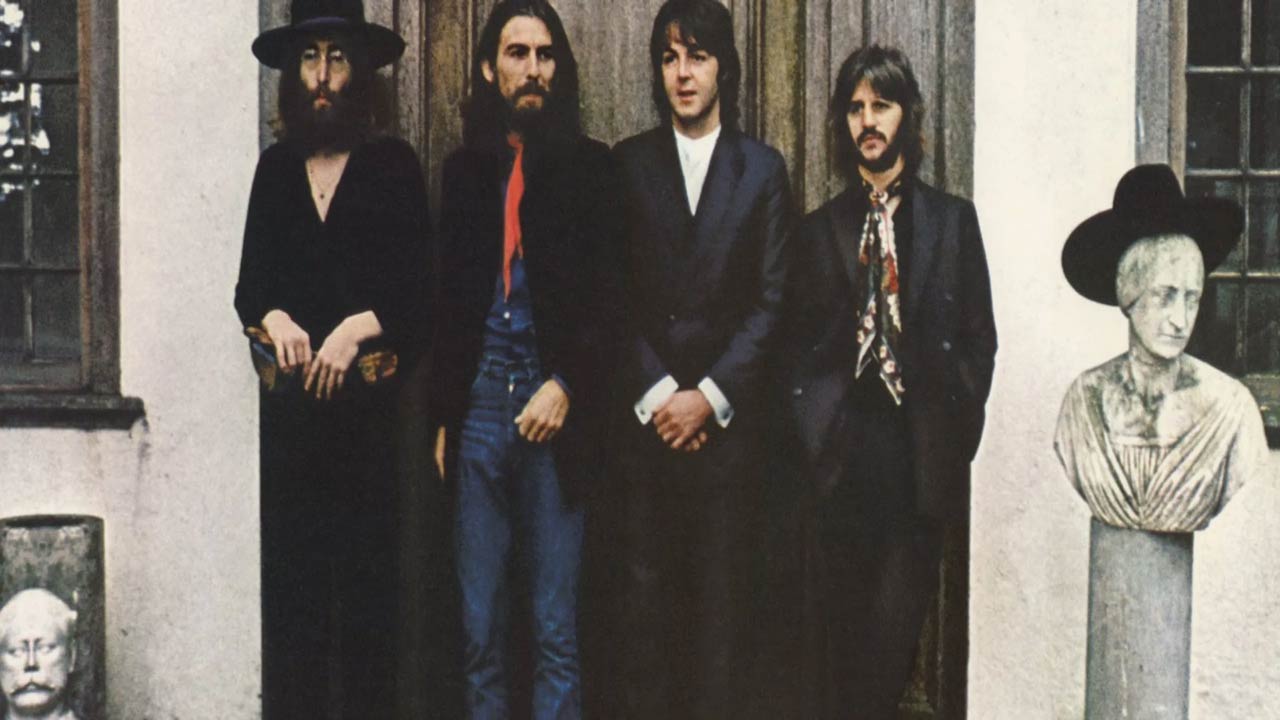
Hey, Jude was the biggest hit of 1968. Written by Paul McCartney and the first release on their Apple record label, the popular song had a nine-week run on Billboard’s Hot 100. The single has also sold approximately eight million copies worldwide and is credited to the Lennon-McCartney partnership.
A fun fact about the Beatles’ recording is that it was the band’s first song to be recorded on eight-track recording equipment.
1967: To Sir With Love (Lulu)
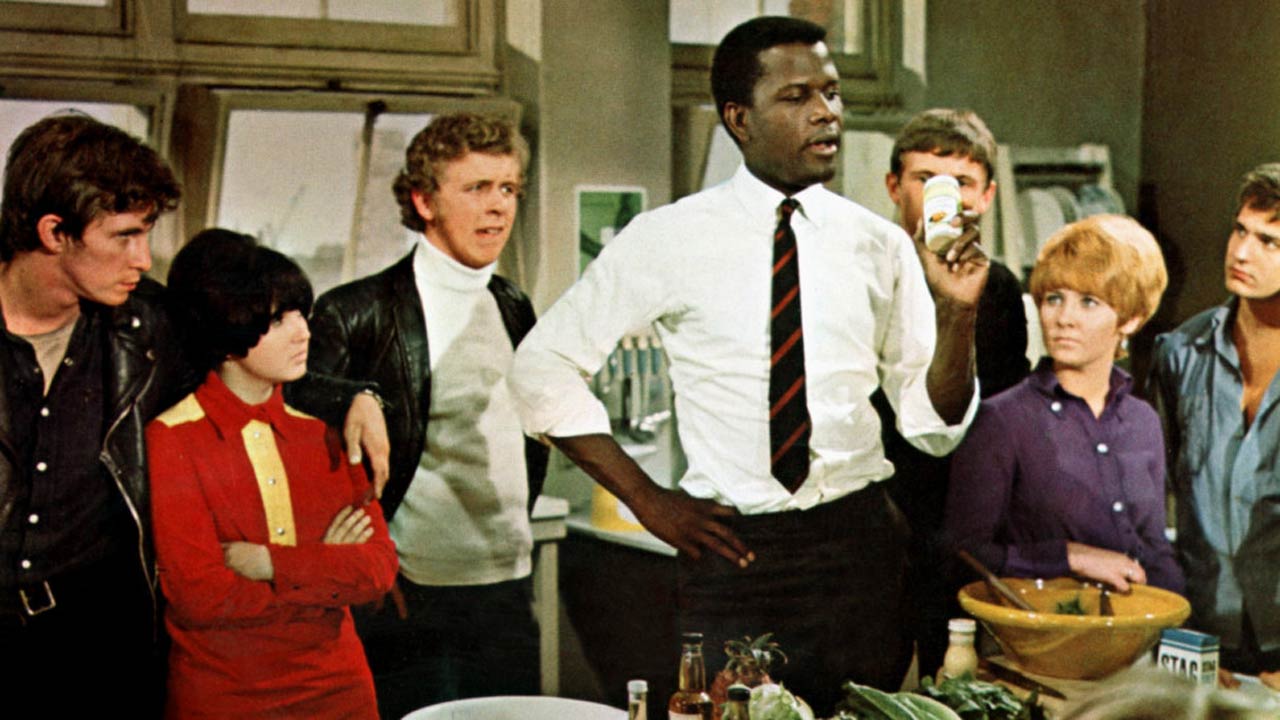
In 1967, when the British singer Lulu first released To Sir With Love, she was only the second female singer to top the charts in the United States. The song was the theme for the 1967 film of the same name.
It became the best-selling single of 1967 and peaked at number one on Billboard’s Hot 100, but the Academy Awards snubbed it with no nomination for Best Original Song.
1966: The Ballad Of The Green Berets (Sgt. Barry Sadler)
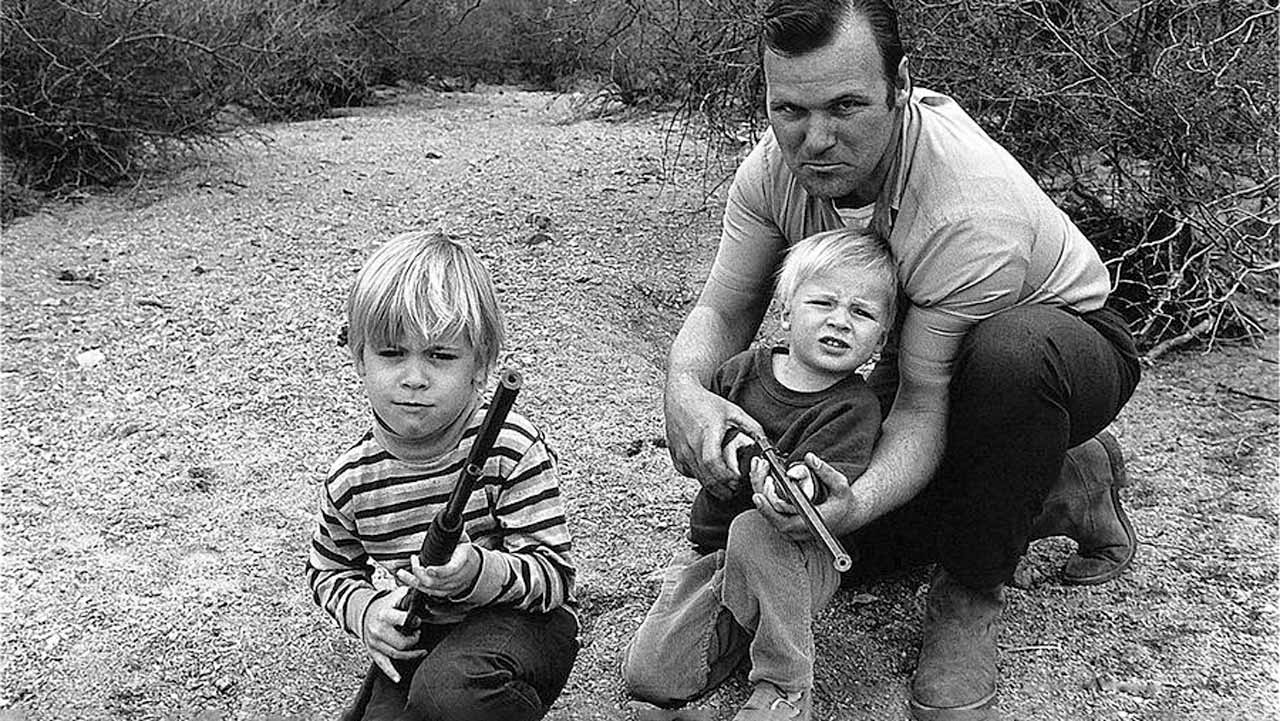
In 1966, The Ballad Of The Green Berets, recorded by Sergeant Barry Sadler, was Billboard’s Hot 100 No. 1 song for five straight weeks. One of the few songs written and released during the Vietnam War that cast the US military in a good light, it was a crossover hit between the Easy Listening chart and Billboard’s Country Music Survey.
Sadler collaborated with the author of the book The Green Berets to co-write the lyrics, which paid homage to US Army Specialist 5 James Gabriel Jr, who was the first native Hawaiian to die in the war.
1965: Wooly Bully (Sam the Sham and the Pharaohs)
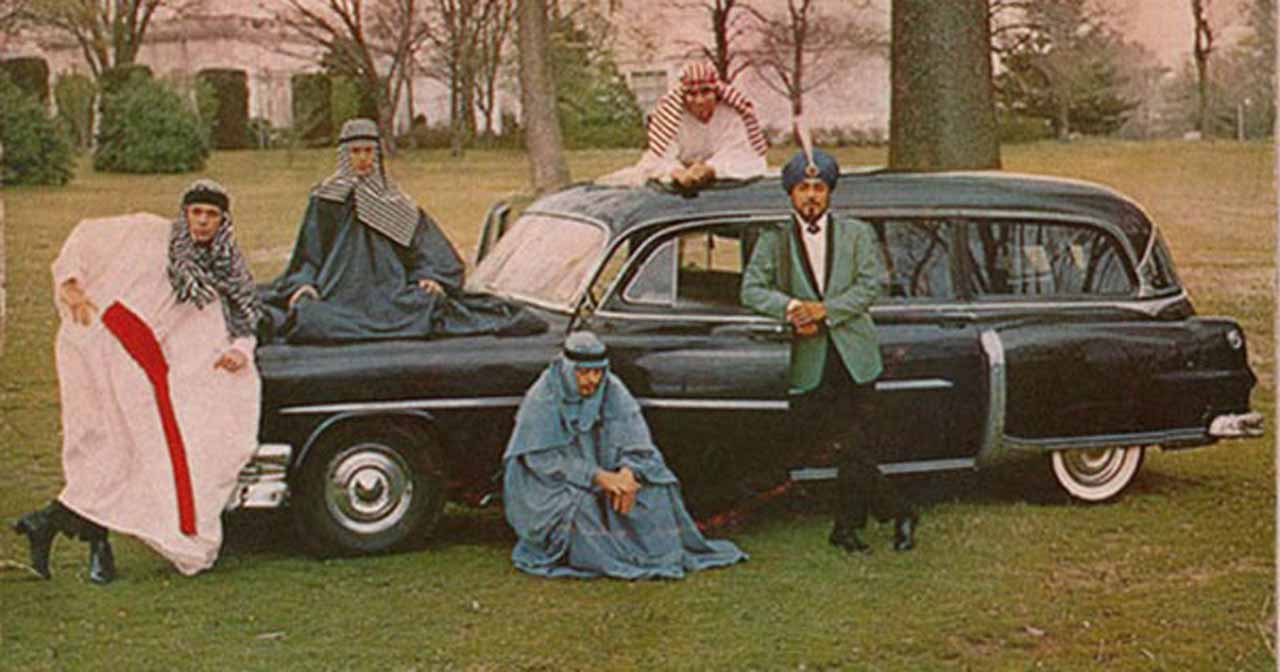
Wooly Bully was Sam the Sham and the Pharaohs’ first and biggest hit they ever released. It sold nearly three million copies worldwide, and despite never reaching the No. 1 spot on the Hot 100, only ranking as high as No. 2, it was named the number-one song of the year by Billboard.
It was nominated for a Grammy in 1965, but Sam and his Pharaohs did not take home the gramophone. However, Bruce Springsteen has covered the song with unintelligible lyrics sixteen times.
1964: I Want To Hold Your Hand (Beatles)
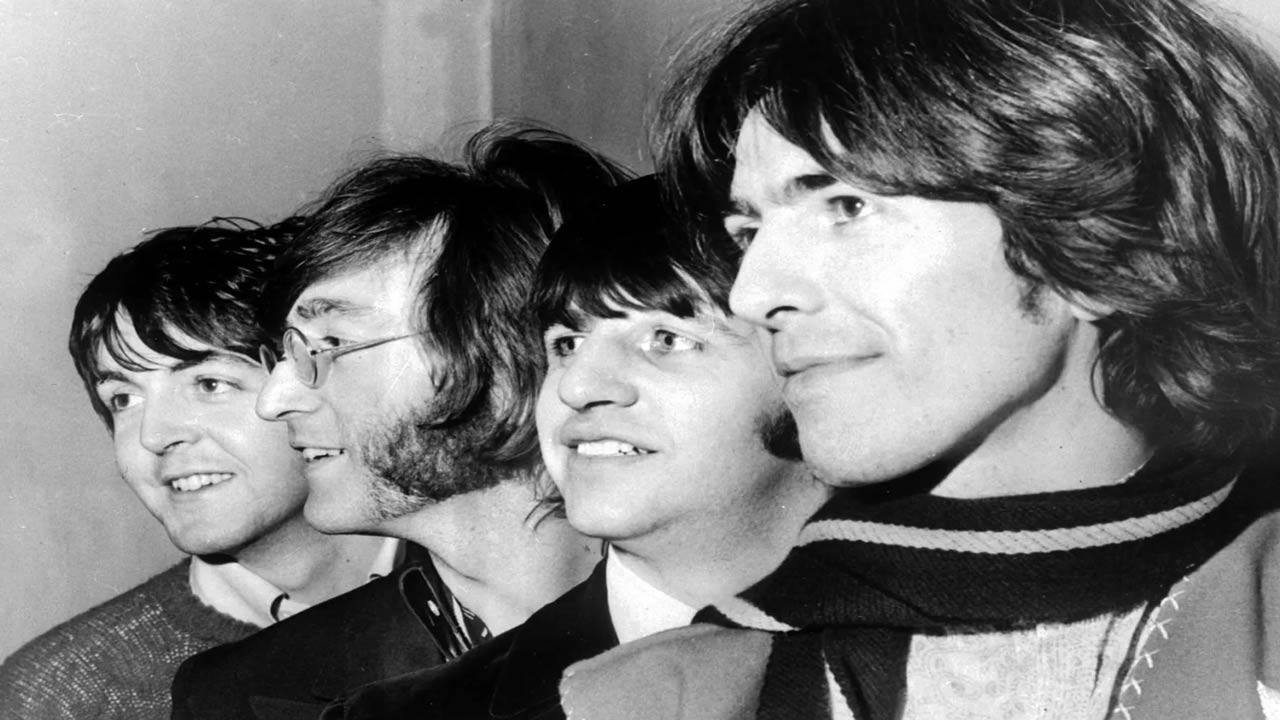
Four years before their No. 1 hit, Hey, Jude, the Beatles released their first Billboard Hot 100 hit in 1964. One of the greatest and most recognizable songs of the ’60s, I Want To Hold Your Hand, was released before the British Invasion stormed the States.
With advanced orders surpassing 1 million in the UK, the single entered the Billboard Hot 100 in January 1964 at 45 in the United States but quickly rose and dominated the top spot for seven consecutive weeks. The single sold more than 12 million copies worldwide.
1963: Sugar Shack (Jimmy Gilmer and the Fireballs)
Jimmy Gilmer and the Fireballs’ smash recording of Sugar Shack topped the charts in 1963. The single spent five weeks on Billboard’s Hot 100 and three weeks on Cashbox‘s Single Charts, a music industry trade magazine. It also saw chart ratings in Canada and the UK.
The group recorded the song in the now-defunct Norman Petty studio in Clovis, New Mexico. Petty also played the Hammond Solovox keyboard to create the instrumental part’s unique sound.
1962: Stranger On The Shore (Mr. Acker Bilk)
Stranger On The Shore, recorded by Mr. Acker Bilk, became the first British recording to reach the US Billboard Hot 100. Debuting in May 1962, the musician wrote and titled the song “Jenny” after his young daughter.
The beautifully crafted melody was the theme song for the BBC show Stranger on the Shore, and it was even shot into space when astronaut Gene Cernan took a cassette tape of the string arrangement on Apollo 10’s mission to the moon.
1961:Tossin’ and Turnin’ (Bobby Lewis)
In the fall of 1960, Bobby Lewis recorded what would become a massive hit by the summer of 1962. Tossin’ and Turnin’ reached the No. 1 spot on Billboard Hot 100 in July 1961 and ended up on the R&B chart at number one that summer as well.
The movie Animal House also featured the song on its soundtrack in 1978, which resulted in a resurgence of popularity for Lewis’s bop.
1960: Theme From “A Summer Place” (Percy Faith)
Although Theme From A Summer Place was initially recorded in 1959 by Max Steiner and Mike Discant, it wasn’t until the following year that composer Percy Faith re-recorded it as an instrumental orchestral arrangement that it became a hit. It entered the Billboard Hot 100 chart at number 96 but quickly rose to the No. 1 spot within six weeks.
Spending nine weeks in the acclaimed position, the theme song set an all-time record that wouldn’t be broken until 1977. Faith won a Grammy for his recording, and it was also the first movie theme song and instrumental to win a Record of the Year award.
1959: The Battle of New Orleans (Johnny Horton)
The Battle Of New Orleans has been recorded multiple times throughout the years, but the most popular version was sung by Johnny Horton in 1959. Ranking as the number-one hit on Billboard’s Hot 100 list that year, the country track resonated with the teens of the late 50s and early 60s.
At the 2nd Annual Grammy Awards, Horton took home the gramophone for the Best Country and Western Performance.
1958: Volare (Nel Blu Dipinto Di Blu) (Domenico Modugno)
Italian singer-songwriter Domenico Modugno broke into the American charts with his 1958 hit song, Nel Blu Dipinto Di Blu, or Volare, which means “to fly” for Americans. It spent five nonconsecutive weeks on Billboard’s Hot 100 in August and September of that year.
That was when the first Grammy Awards happened, and Modugno was the first winner of Record of the Year and Song of the Year. He also entered the song into the Eurovision Song Contest and took home 3rd place.
1957: All Shook Up (Elvis Presley)
Landing back to back on the Hot 100 chart, Elvis continued to impress fans and critics worldwide with the hottest single of 1957, All Shook Up. With his gyrating hips and smooth voice, the King was again at the top of Billboard for nine consecutive weeks that spring.
It also landed on Billboard’s R&B Chart for four weeks, making it his second single to do so. Over the years, different artists have covered All Shook Up 42 times.
1956: Heartbreak Hotel (Elvis Presley)
Elvis Presley was at the height of his stardom in the 1950s, and no one could make schoolgirls cry harder than “The King.” The blue-eyed crooner landed on Billboard’s Hot 100 with his massive hit Heartbreak Hotel in 1956.
The single stayed there for seven weeks and on the Country and Western charts for seventeen weeks! Due to the song’s popularity, it became one of the hottest-selling singles of 1956 and Presley’s first million-seller.
1955: Cherry Pink And Apple Blossom White (Perez Prado)
Before it was a big hit, topping the charts in the United States, Perez Prado released the instrumental single Cherry Pink And Apple Blossom White in his home country of Mexico in 1953. By the following year, the song had reached American radiowaves and ultimately ended up on Billboard’s Hot 100 for ten weeks two years after it was originally released.
A little less than 30 years later, the British pop group Modern Romance recorded the vocal version of the song, which reached the UK Top 20 chart.
1954: Little Things Mean A Lot (Kitty Kallen)
Topping the Billboard Hot 100 of 1954 was Kitty Kallen’s version of Little Things Mean A Lot. Written by disc jockey Carl Sutz and Edith Lindeman, the traditional pop song was published in 1953.
The track rose to the number one spot on Cashbox’s chart and hit the top spot in the UK in the same year.
1953: Song From Moulin Rouge (Percy Faith)
Song From Moulin Rouge, or It’s April Again or Where Is Your Heart, depending on who you talk to, is a famous melody from the 1952 classic film Moulin Rouge. The Percy Faith Orchestra recorded the track’s most popular version with vocals sung by Felicia Sanders.
Released by Columbia Records, the song reached the Billboard Hot 100 list in 1953 and lasted 28 weeks, peaking at number one for ten weeks.
1952: Blue Tango (Leroy Anderson)
Instrumental compositions dominated the charts in the early 1950s, and Blue Tango by Leroy Anderson was one of them. The most popular melody of 1952 was initially recorded for an orchestra but eventually had lyrics written by Mitchell Parish.
The song was Billboard’s number-one song of 1952 and has been recorded multiple times by various artists throughout the years.
1951: Too Young (Nat King Cole)
Recorded by Nat King Cole and released by Capitol Records, Too Young was the most popular song of 1951. It topped the charts for five weeks in the number-one position and had broad appeal to a younger audience of music lovers.
It’s rumored that Cole described the song as one of his top three favorite songs. In 1972, fourteen-year-old Donny Osmond recorded the single, which went on to become an international top 10 hit for the young artist.
1950: Goodnight, Irene (The Weavers)
Initially recorded by blues musician Huddie’ Lead Belly’ Ledbetter in 1933, it was when The Weavers recorded Goodnight, Irene in 1950 that it became a hit. The Weavers were an American Folk band composed of Pete Seeger, Lee Hays, Ronnie Gilbert, and Fred Hellerman.
Their version of the bluesy folk classic was the first folk song to reach the number-one spot on Billboard’s Hot 100 chart. Despite the group’s popularity, they were followed by the FBI during the 1950s Red Scare for refusing to sign a “loyalty oath.”
1949: (Ghost) Riders in the Sky (Vaughn Monroe)
In 1949, the most popular song was a Country and Western ballad entitled Riders In The Sky, or some say Ghost Riders In the Sky. The song was written in 1948 by Stan Jones, who was an American songwriter and actor and reached the top of the charts with Vaughn Monroe’s version the following year.
The Western Writers of America claim it as the best Western song ever to be written.
1948: Twelfth Street Rag (Pee Wee Hunt)
The recording of the Twelfth Street Rag by Pee Wee Hunt became Billboard’s biggest hit of 1948, selling more than one million copies. The release of Hunt’s song was the first chart-topper for the artist and his orchestra.
The tune was best known as the theme music for The Joe Franklin Show during that era. However, more recent pop culture fans might recognize the song’s steel guitar riff as the background music in the cartoon Spongebob Square Pants.
1947: Near You (Francis Craig)
If you were born in 1947, like my mother-in-law was, the most popular song released that year was Near You by Francis Craig and his Orchestra, with lyrics written by Kermit Goell. The song ranked 21 weeks on the Billboard Best Sellers chart that summer, peaking at number one.
The song has been covered many times, but one of the most popular versions was performed by the country duo George Jones and Tammy Wynette in 1977. Although the couple had been divorced for two years when they released the single, it was a big hit for the stars.
1946: Prisoner Of Love (Perry Como)
Although Prisoner of Love was written in 1931, it wasn’t until 1946, when Perry Como recorded it, that it became a massive hit. It first reached the Billboard Magazine chart in March 1946 and spent 21 weeks on the chart, peaking at No. 1.
Como went on to record two other versions of the track. The second recording was made in 1970 during his live performance at the International Hotel in Las Vegas.
1945: Rum & Coca-Cola (The Andrew Sisters)
The Andrew Sisters, known for their swing and boogie-woogie stylization of harmonizing vocals, released their version of Rum and Coca-Cola in 1945. The calypso-style song went on to become a big hit that year.
The three sisters, LaVerne, Maxene, and Patricia, had a lot of success during their career, selling an estimated 80 million records, including their 1941 popular hit, Boogie Woogie Bugle Boy.
